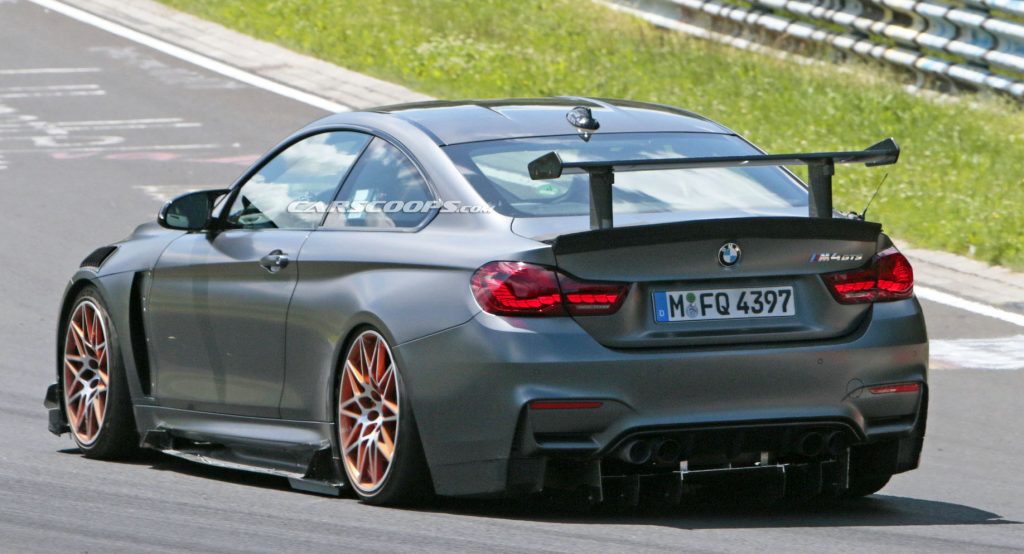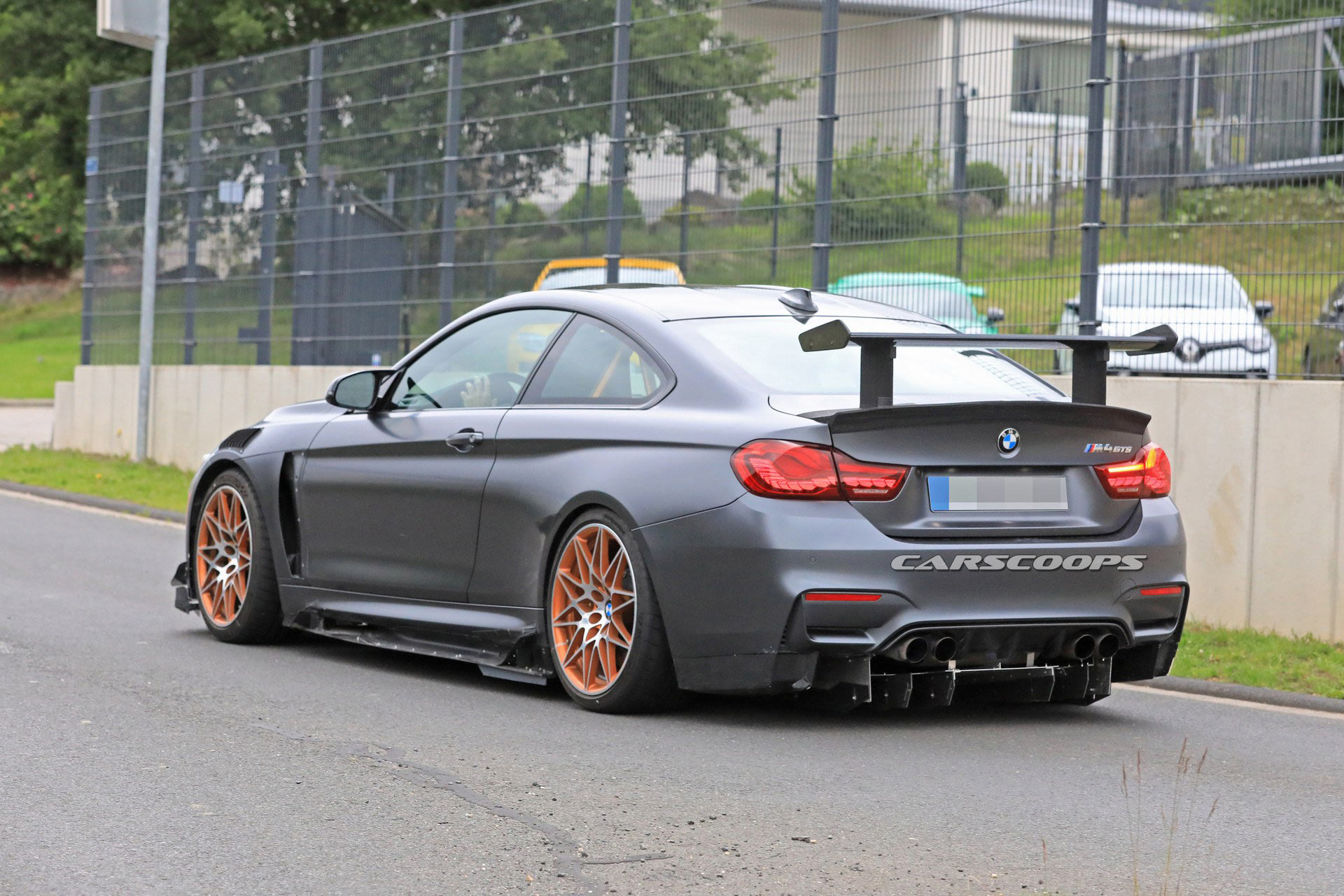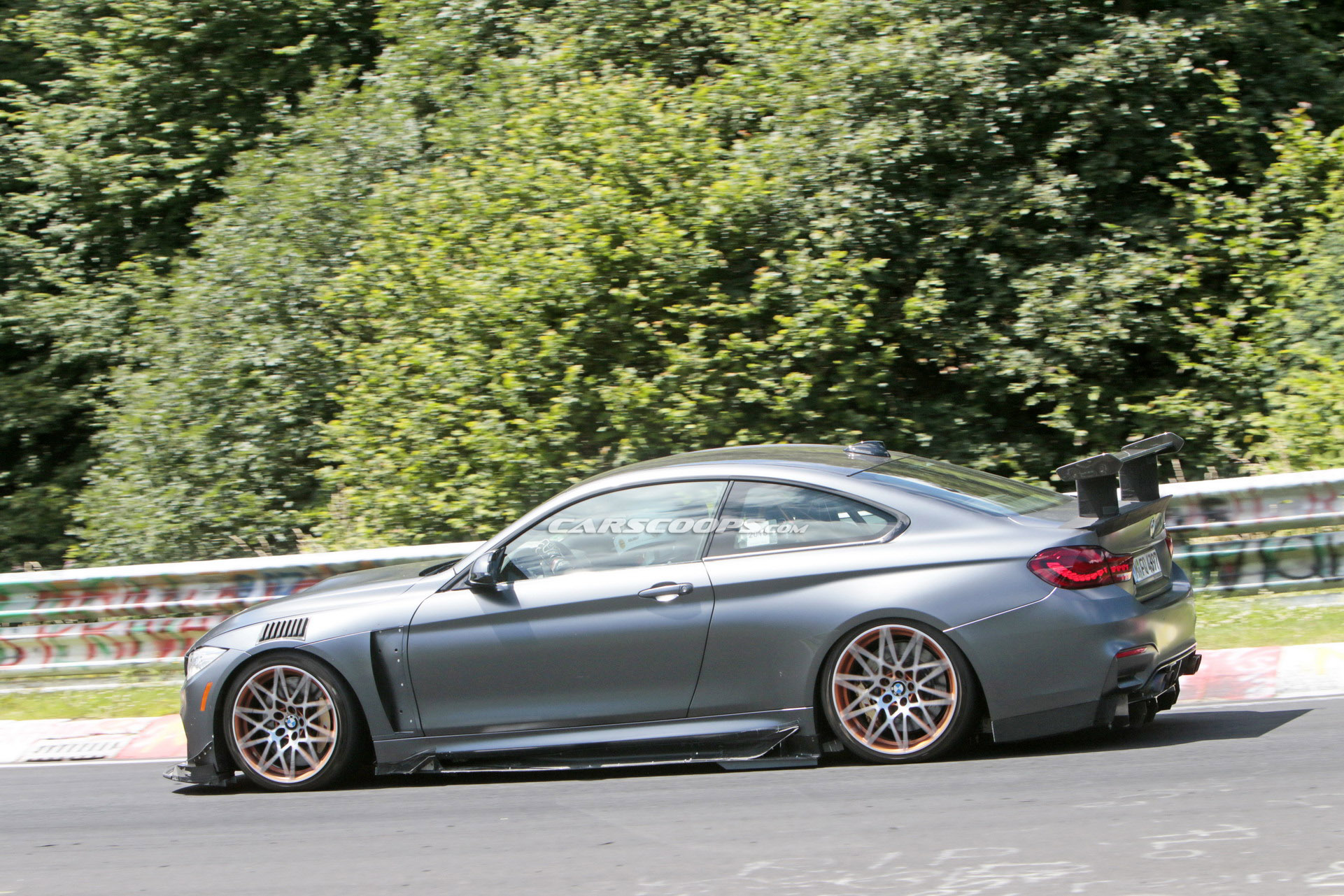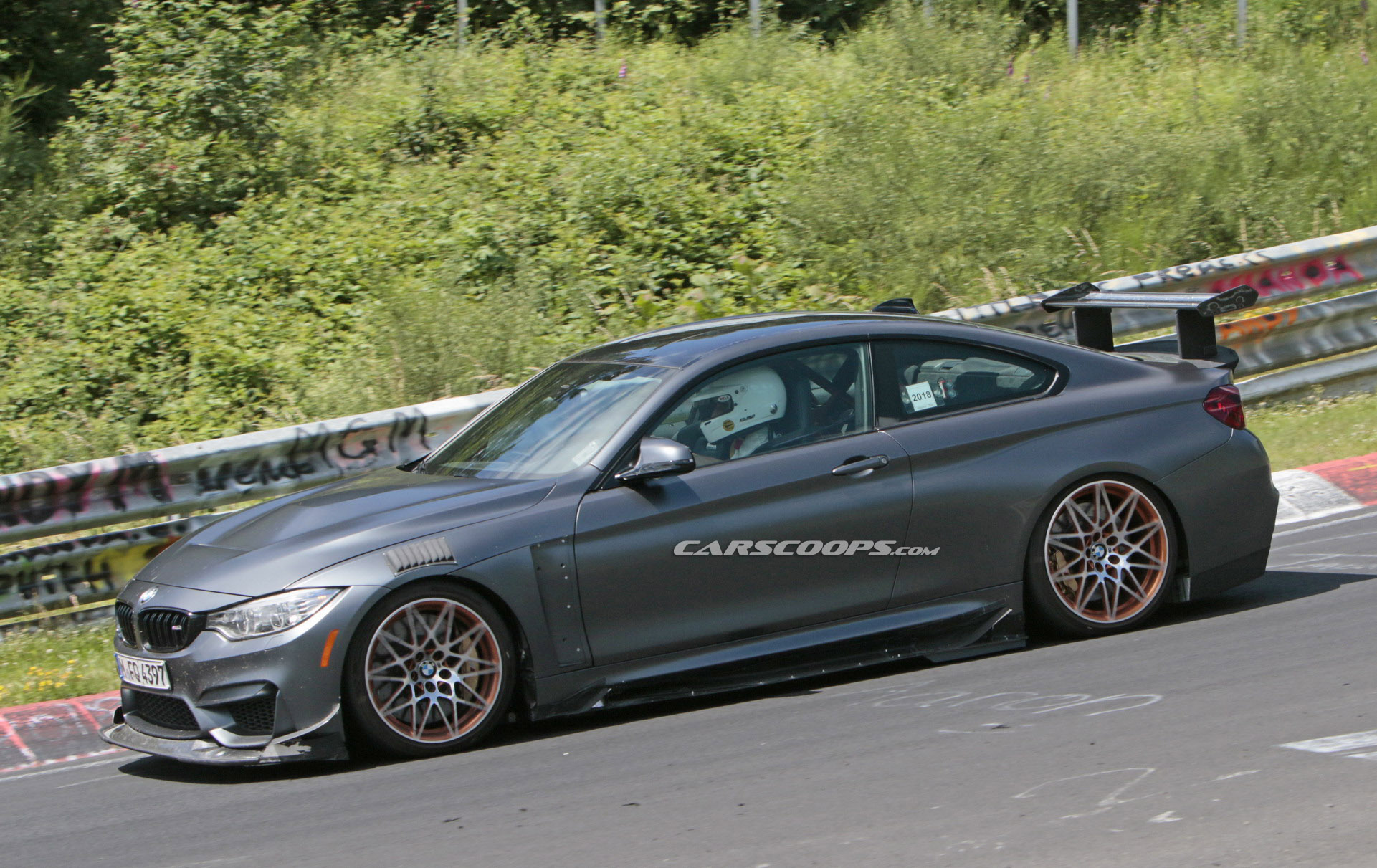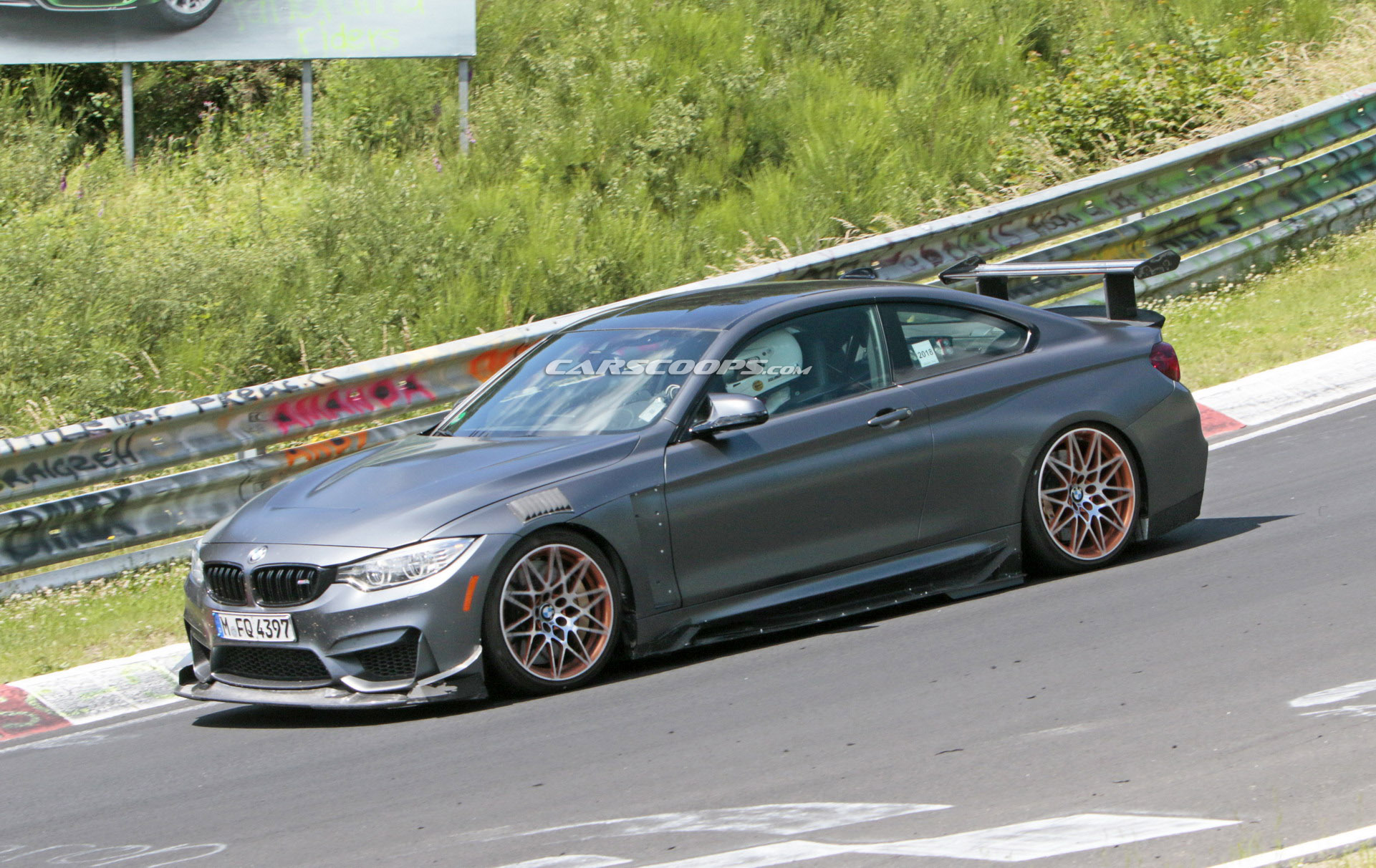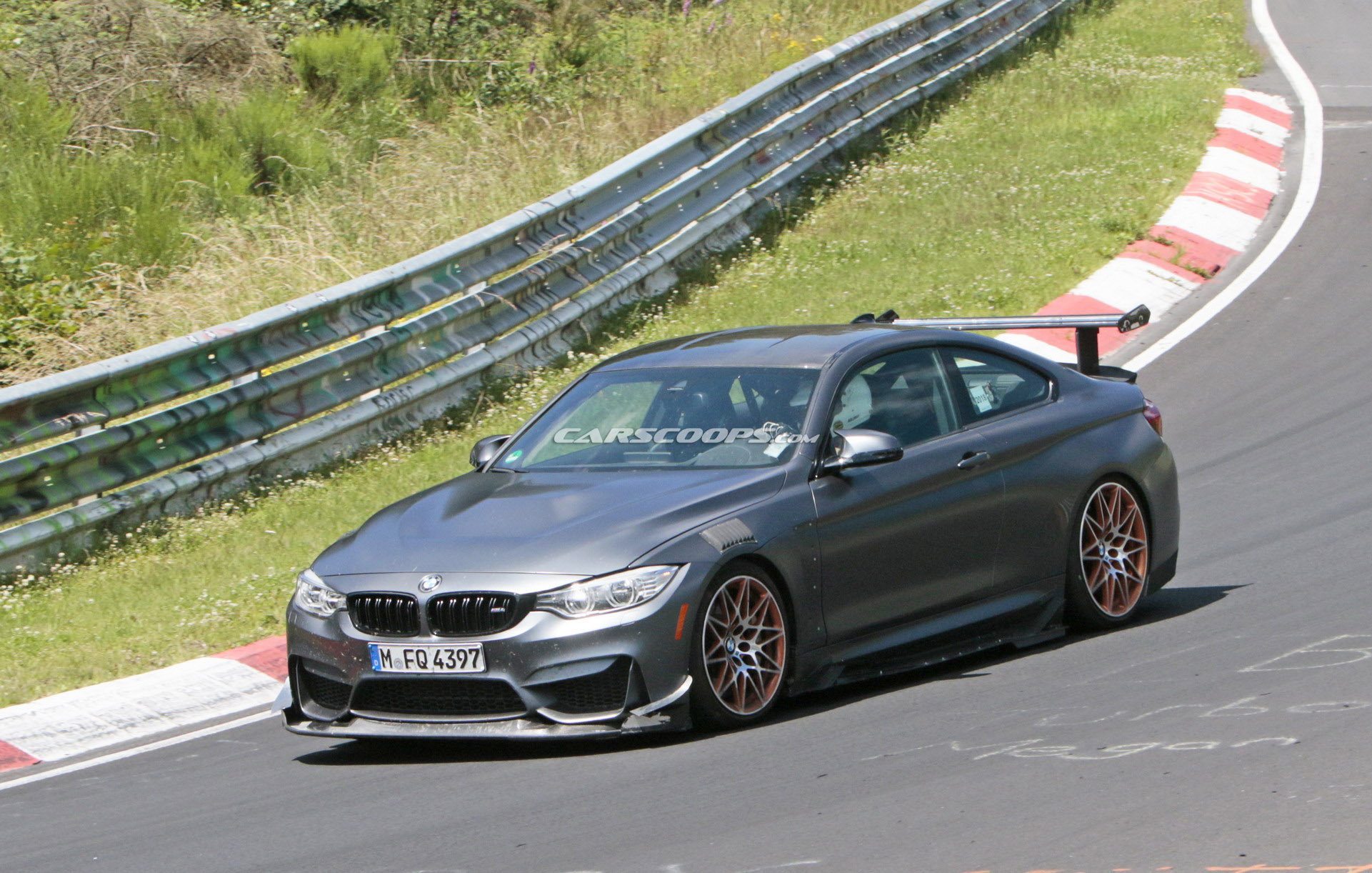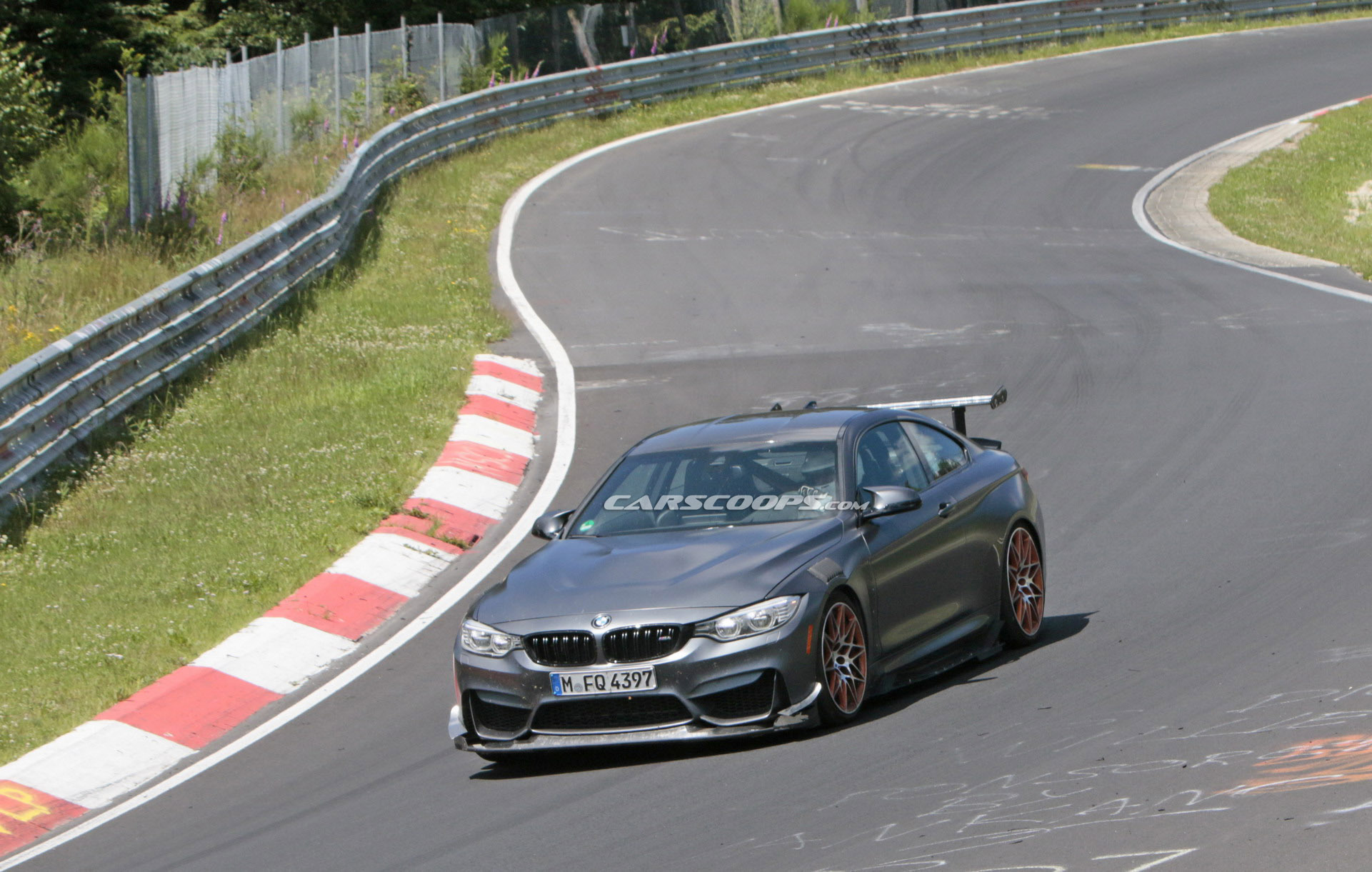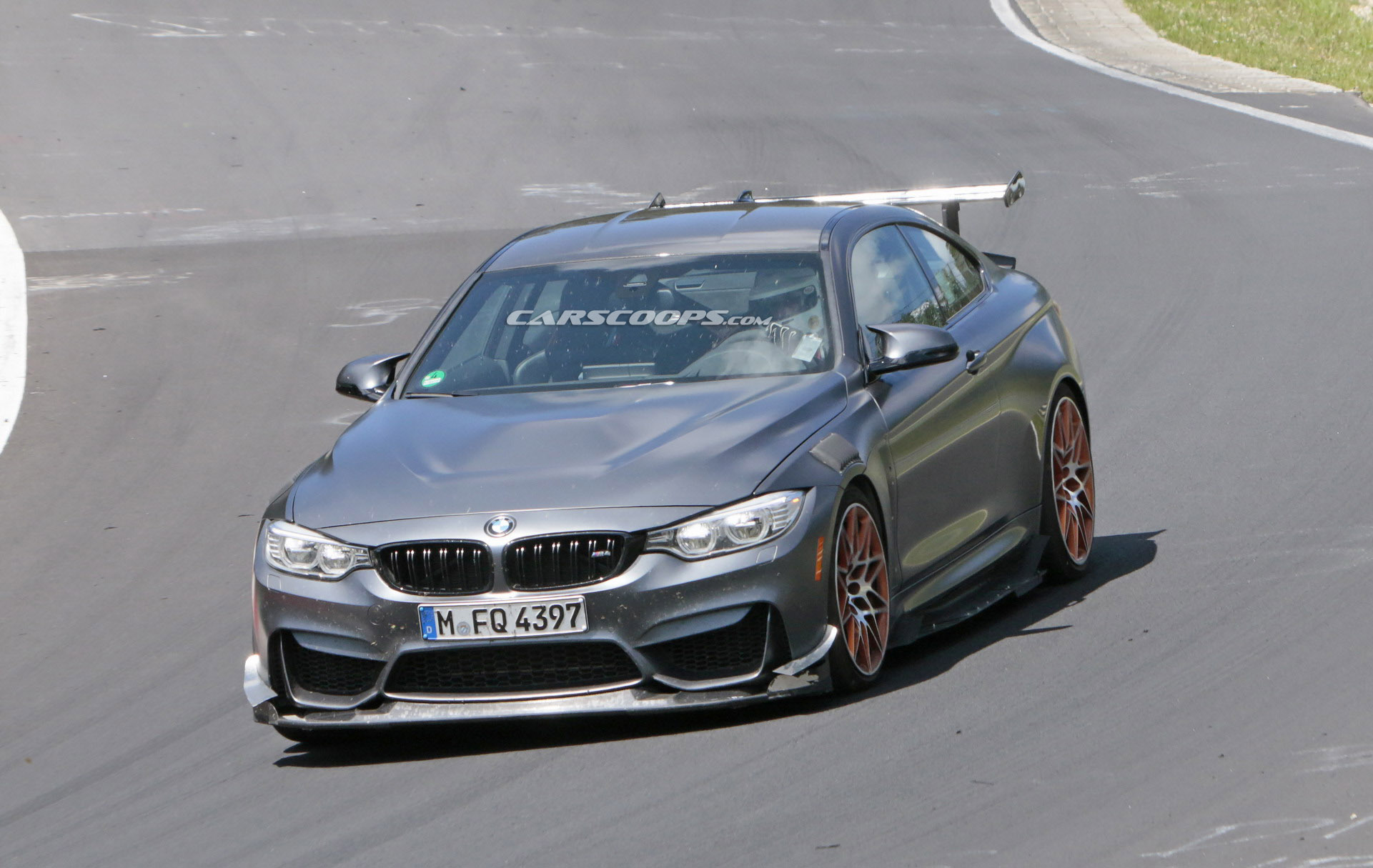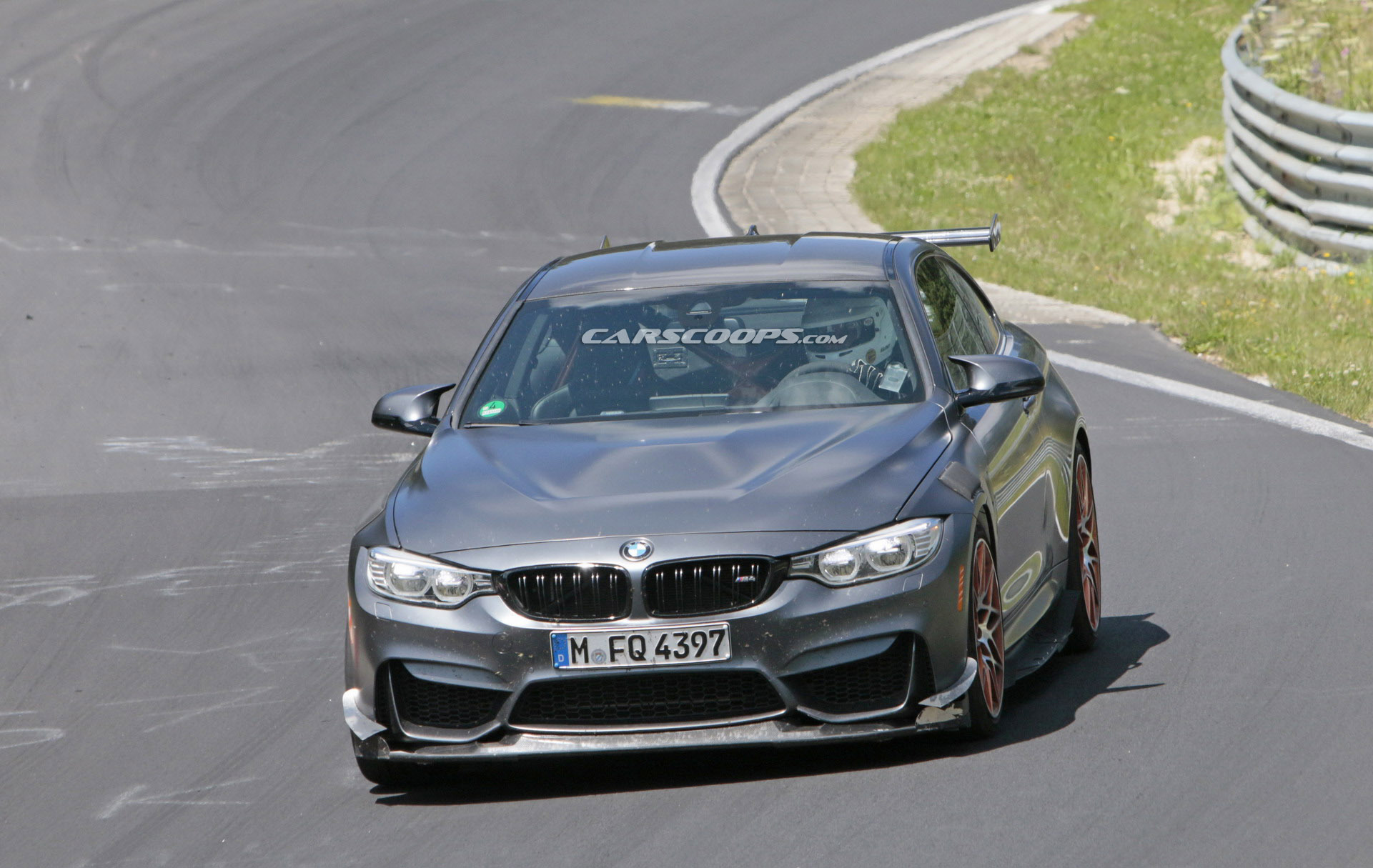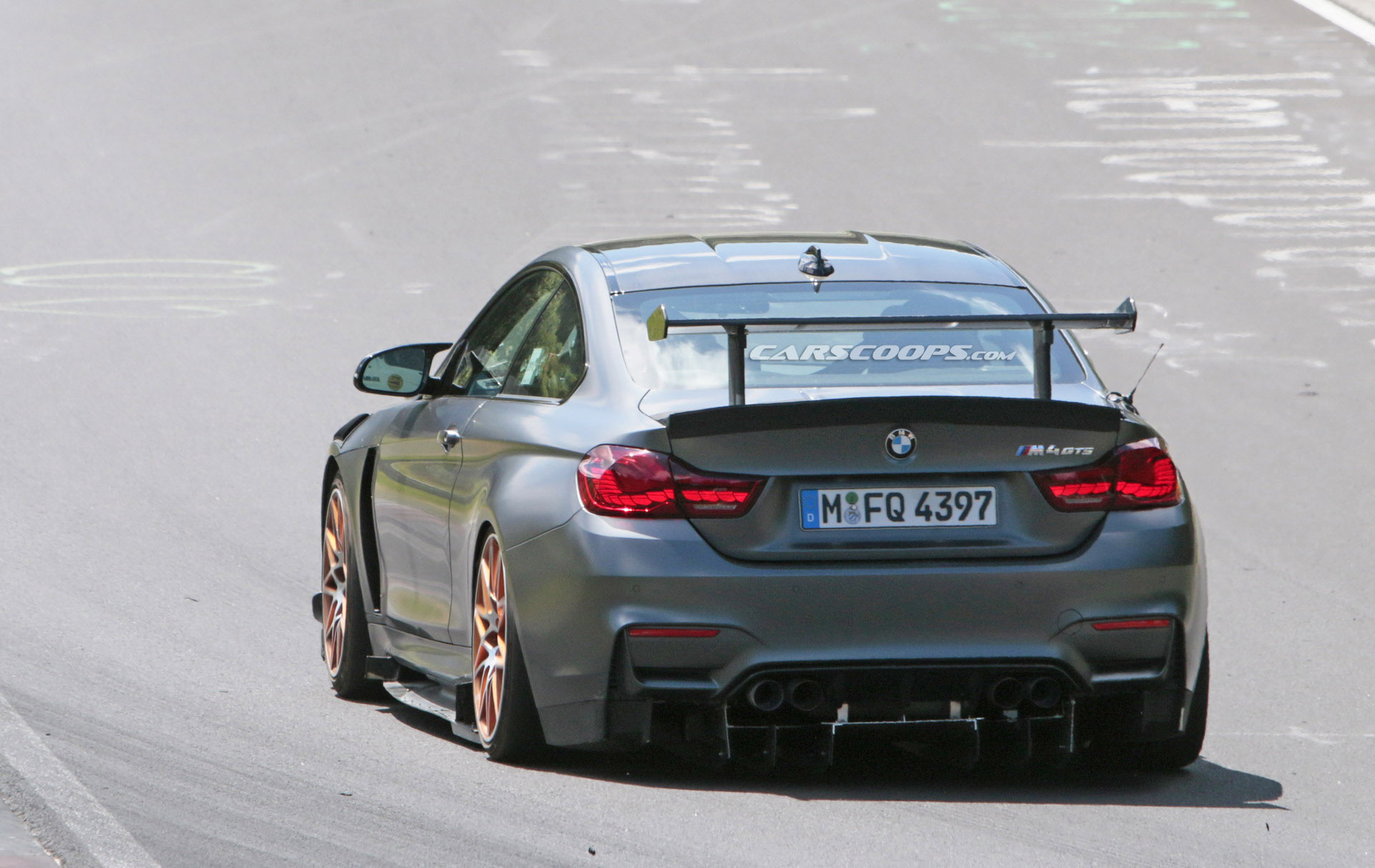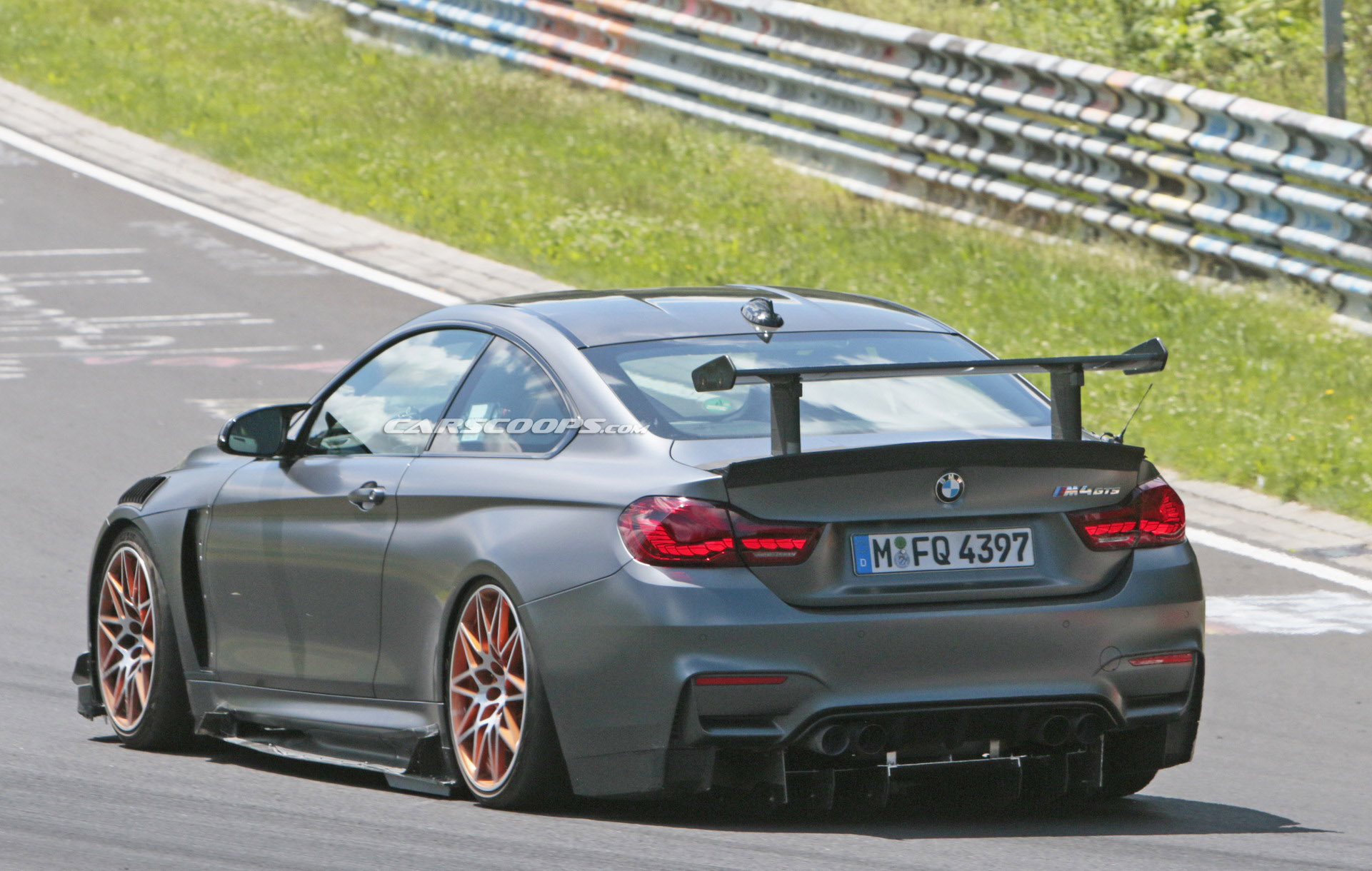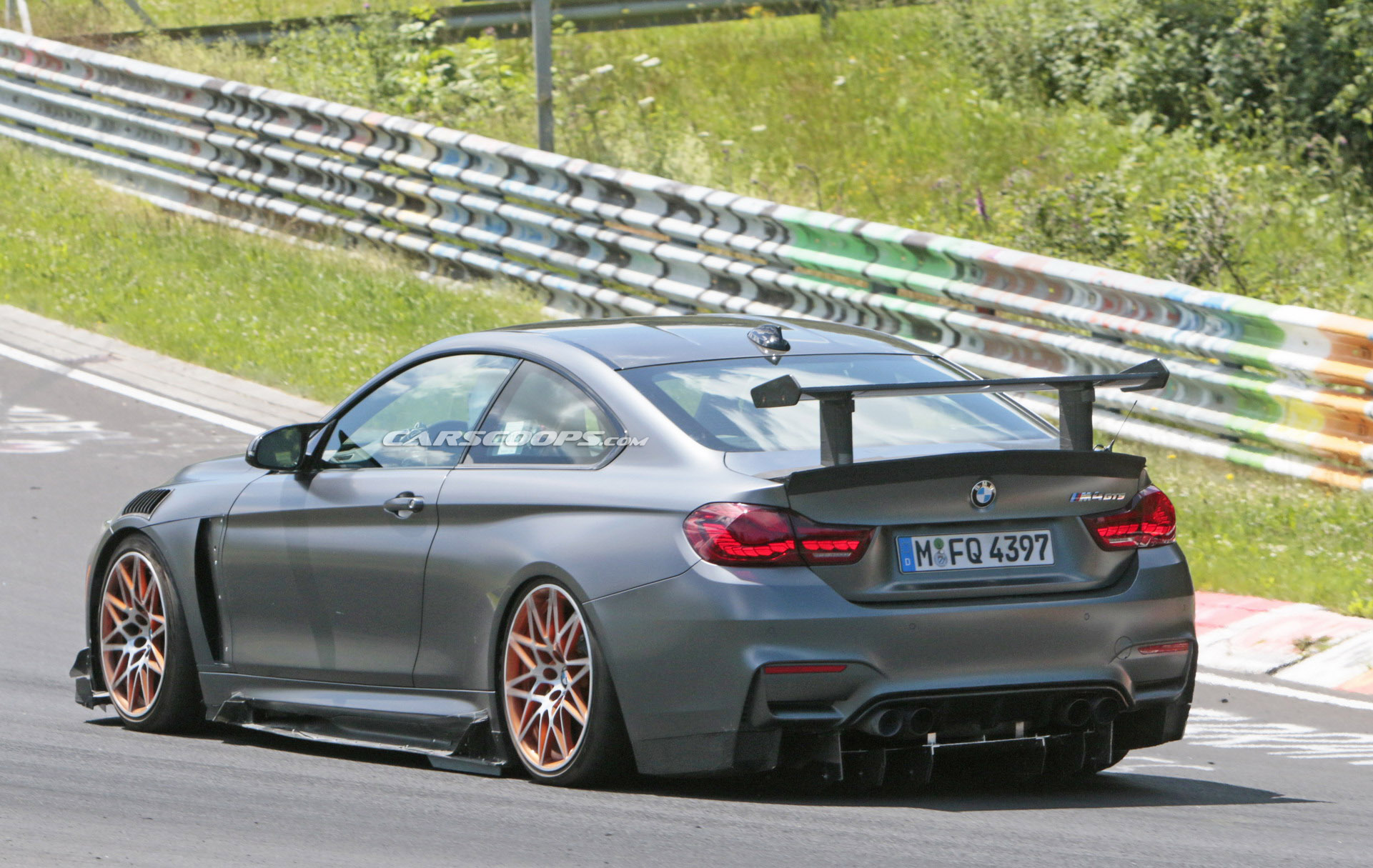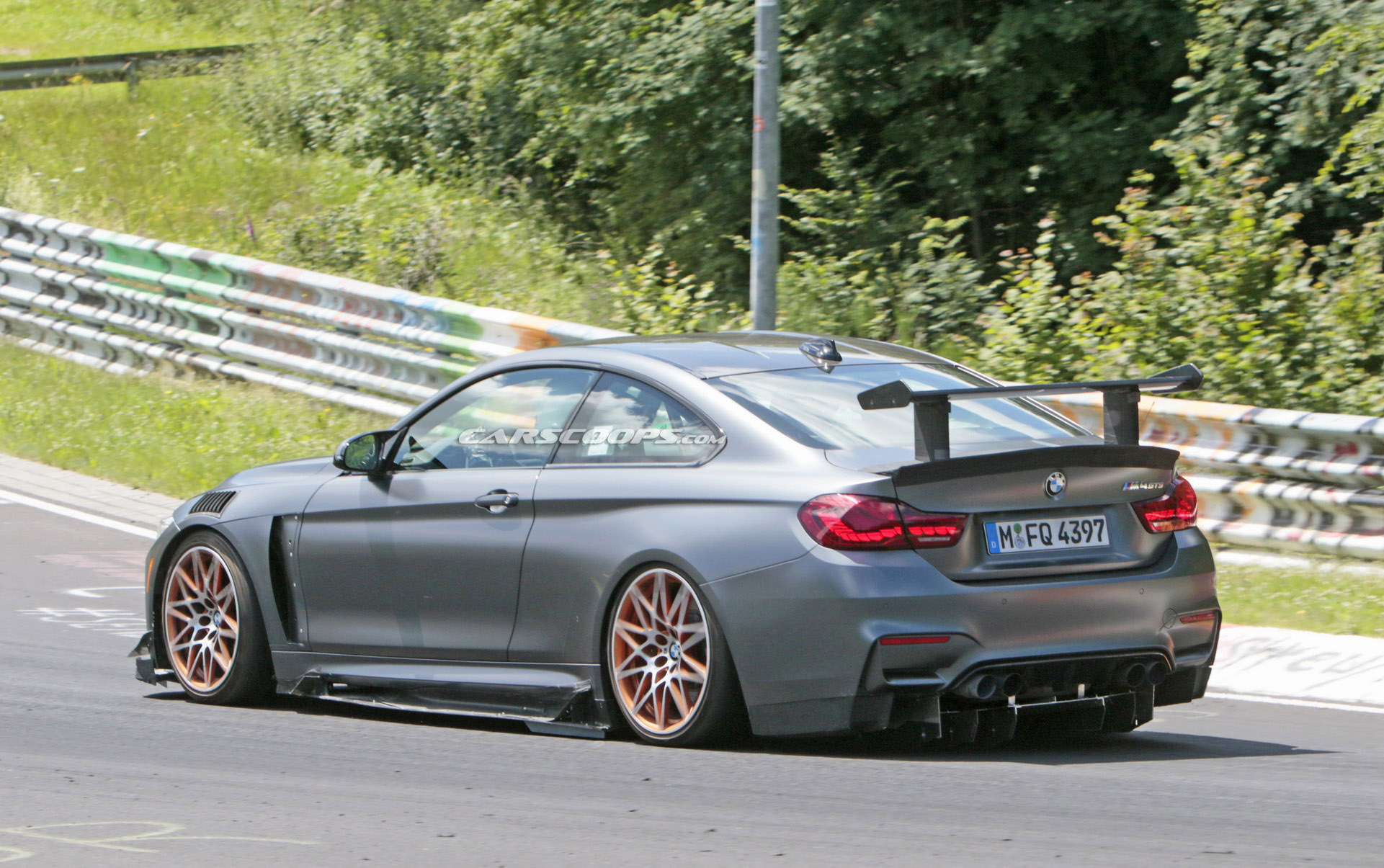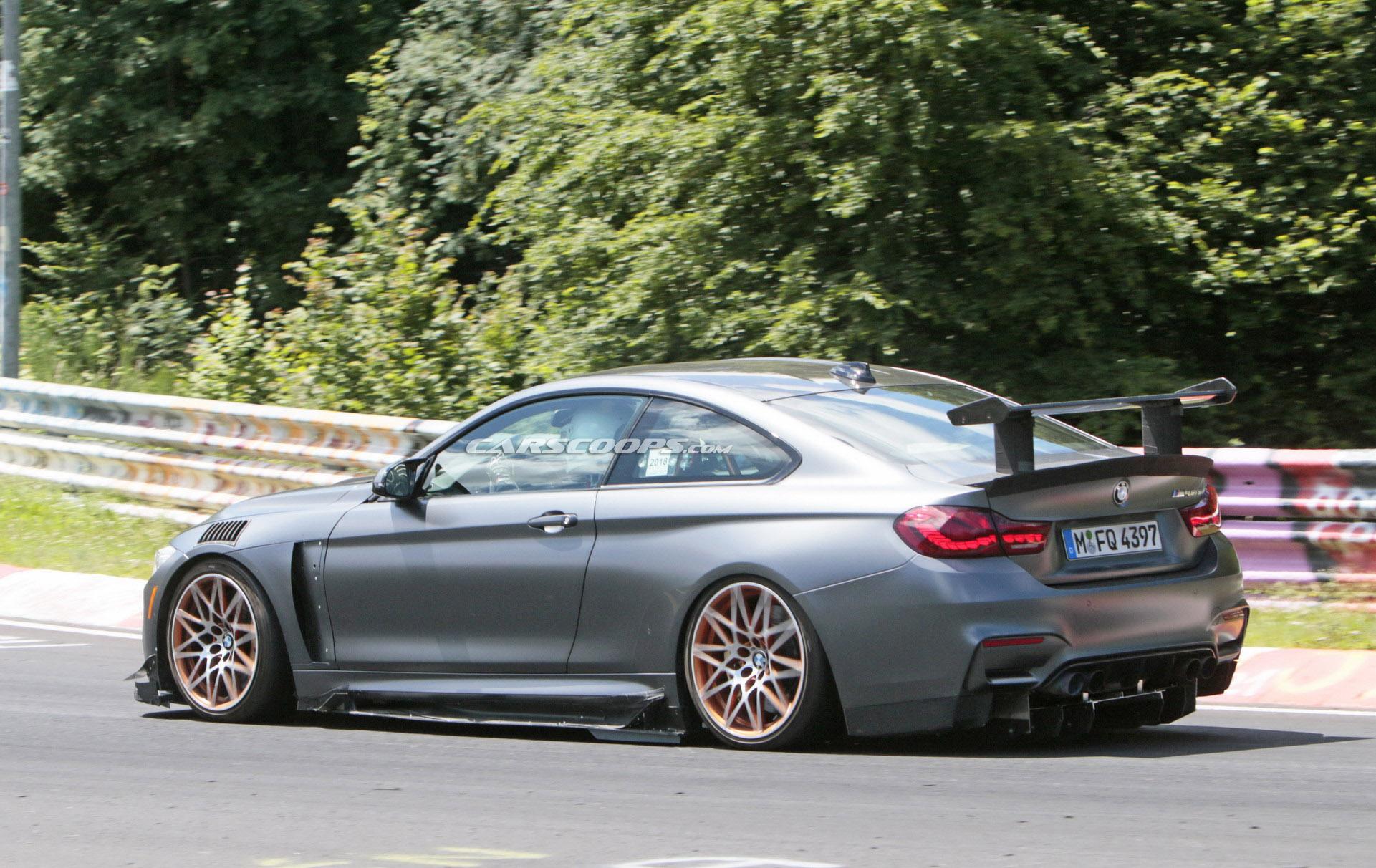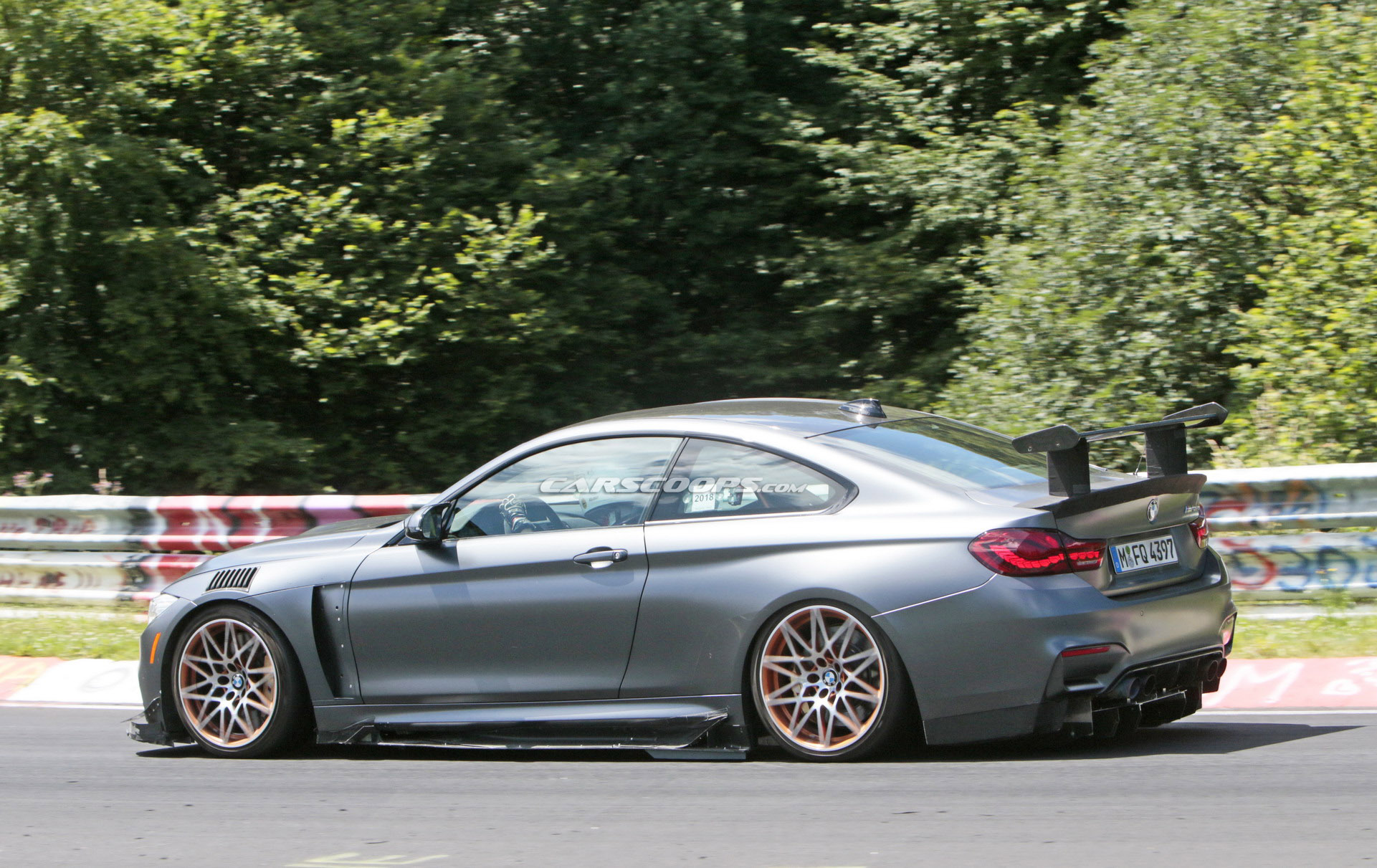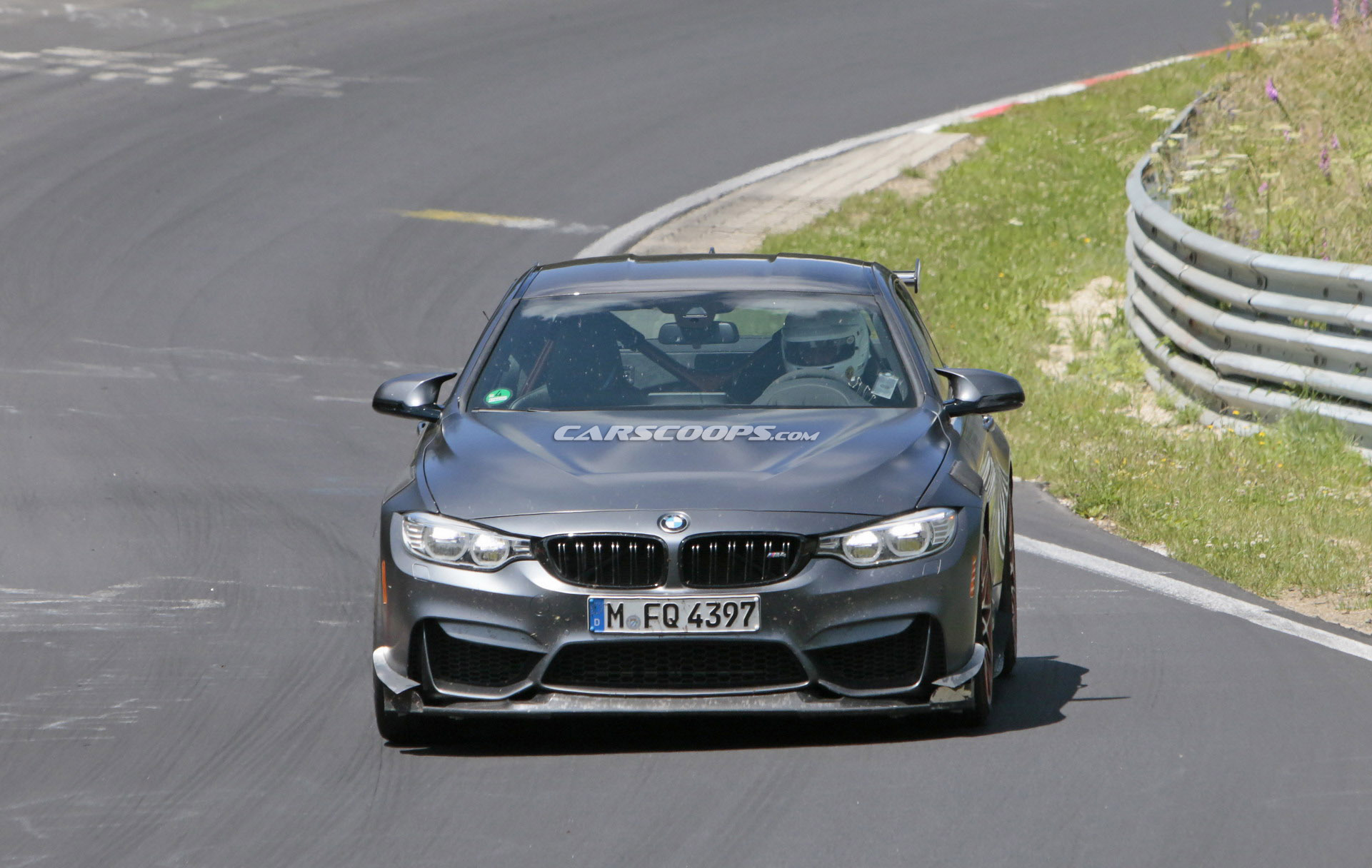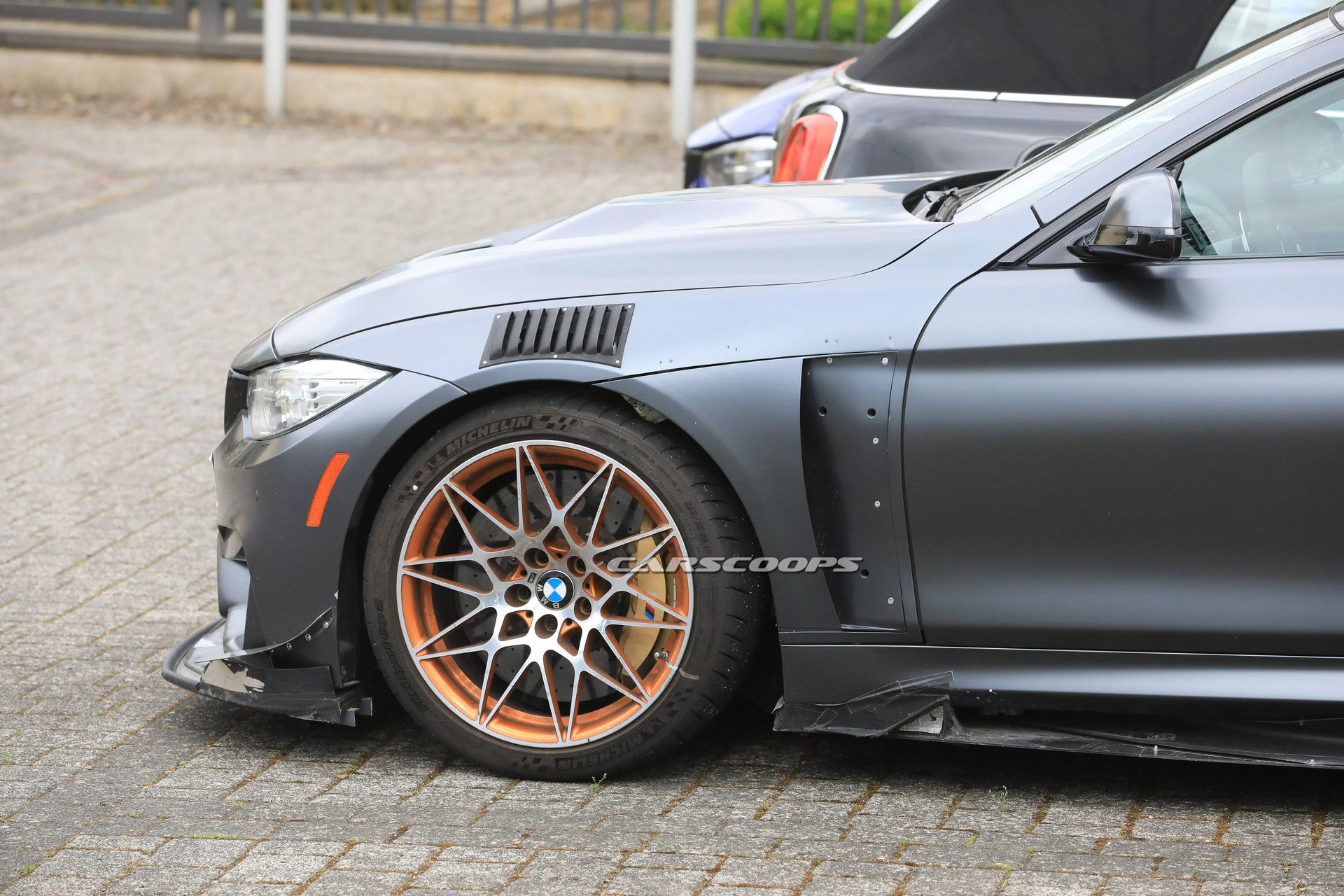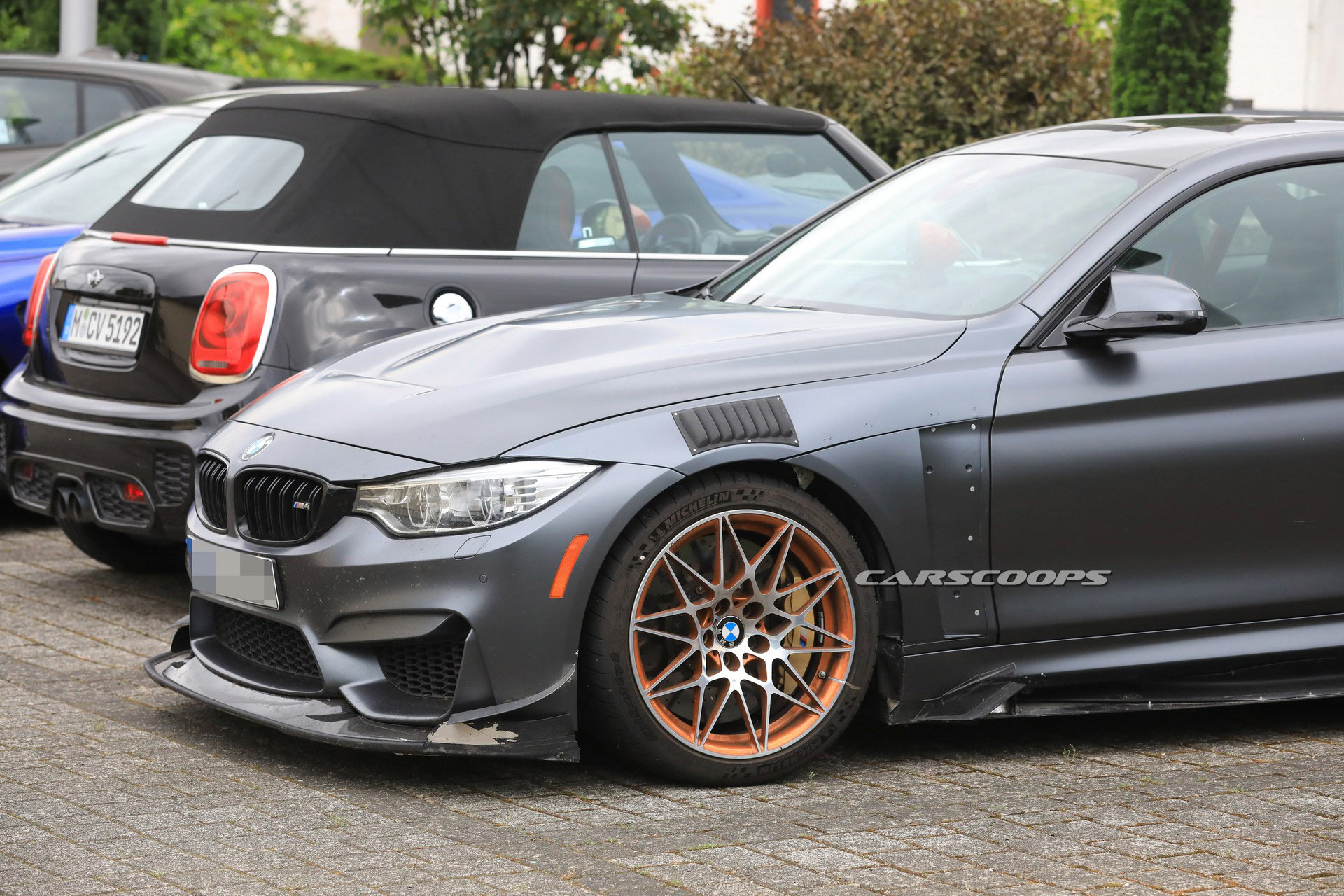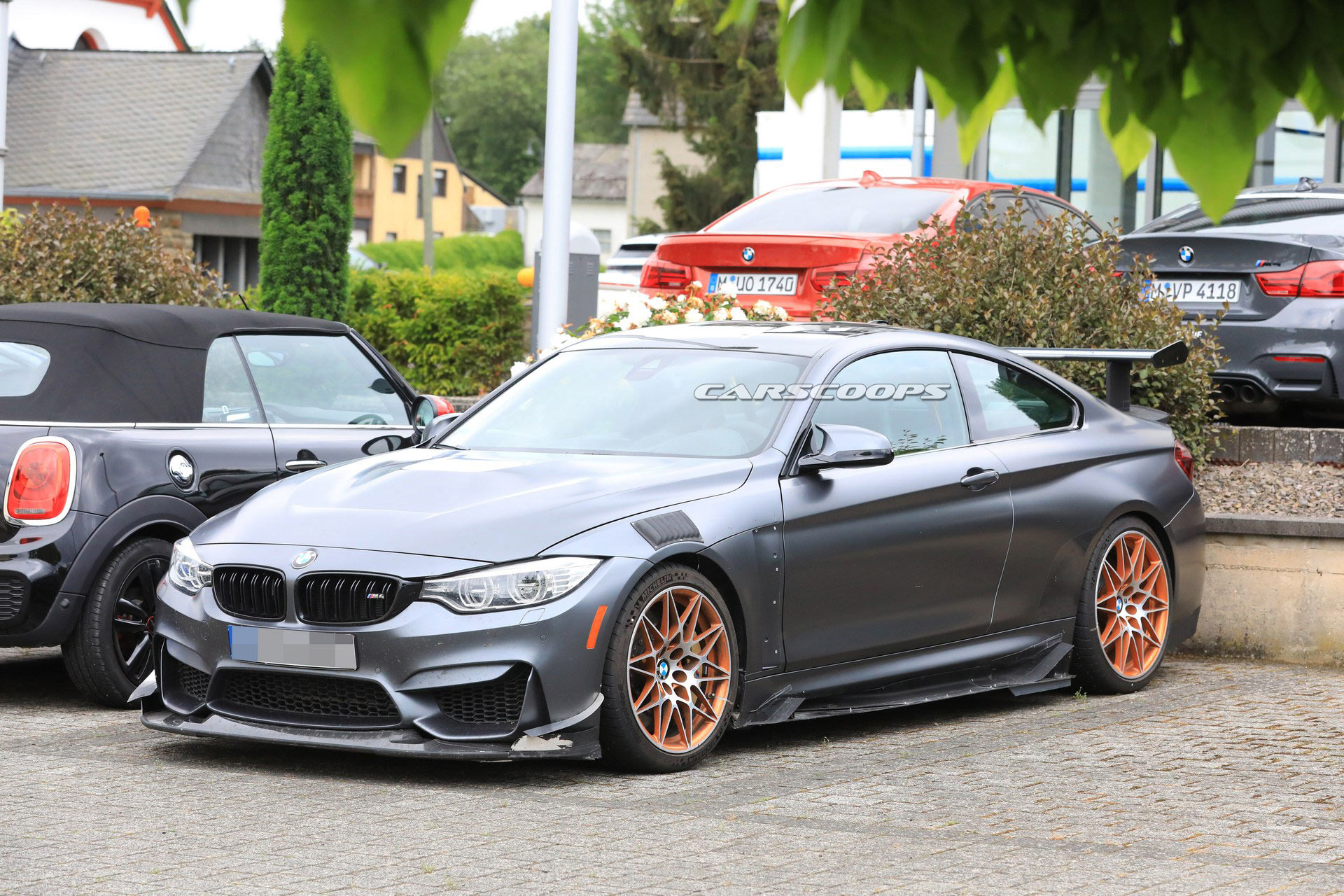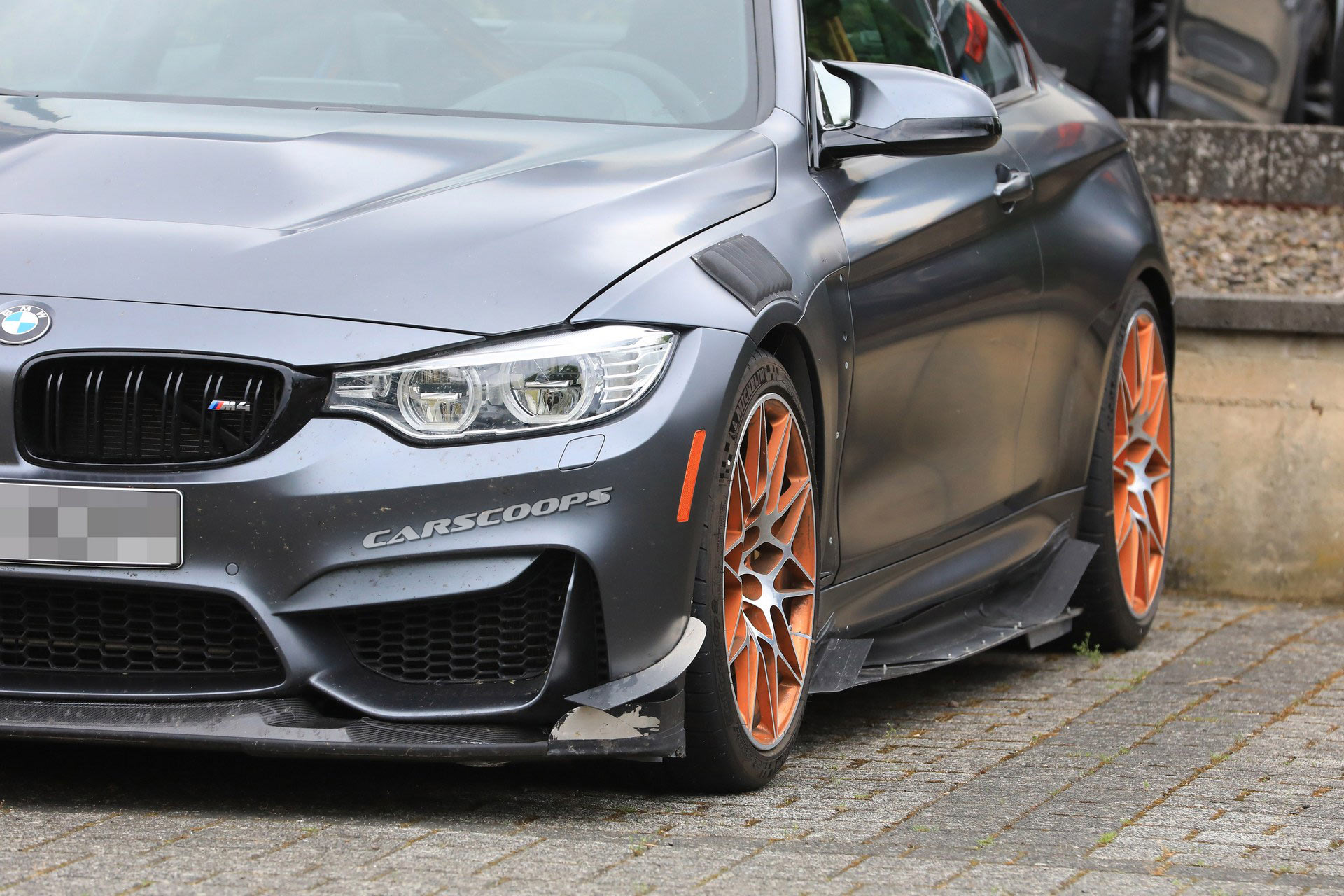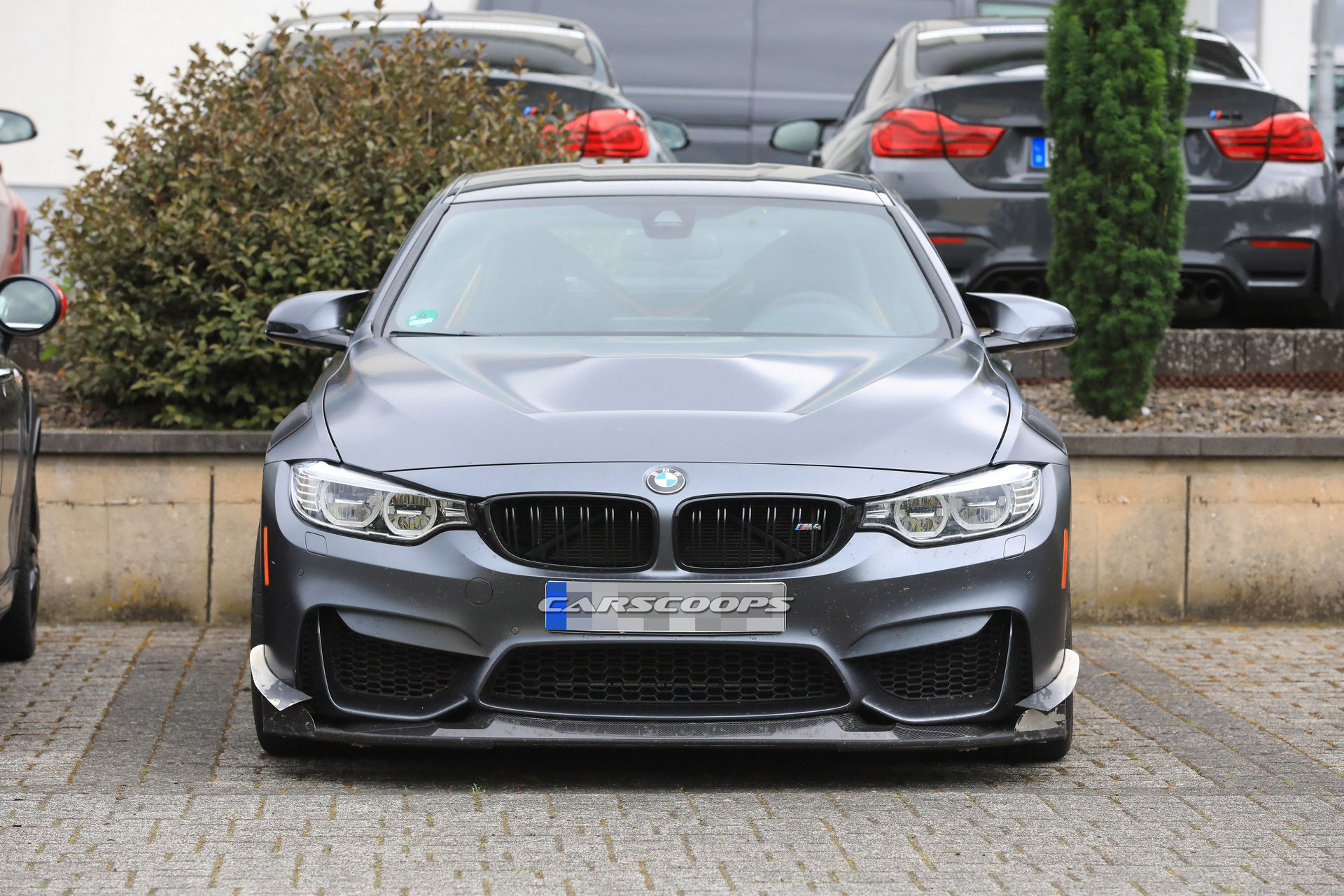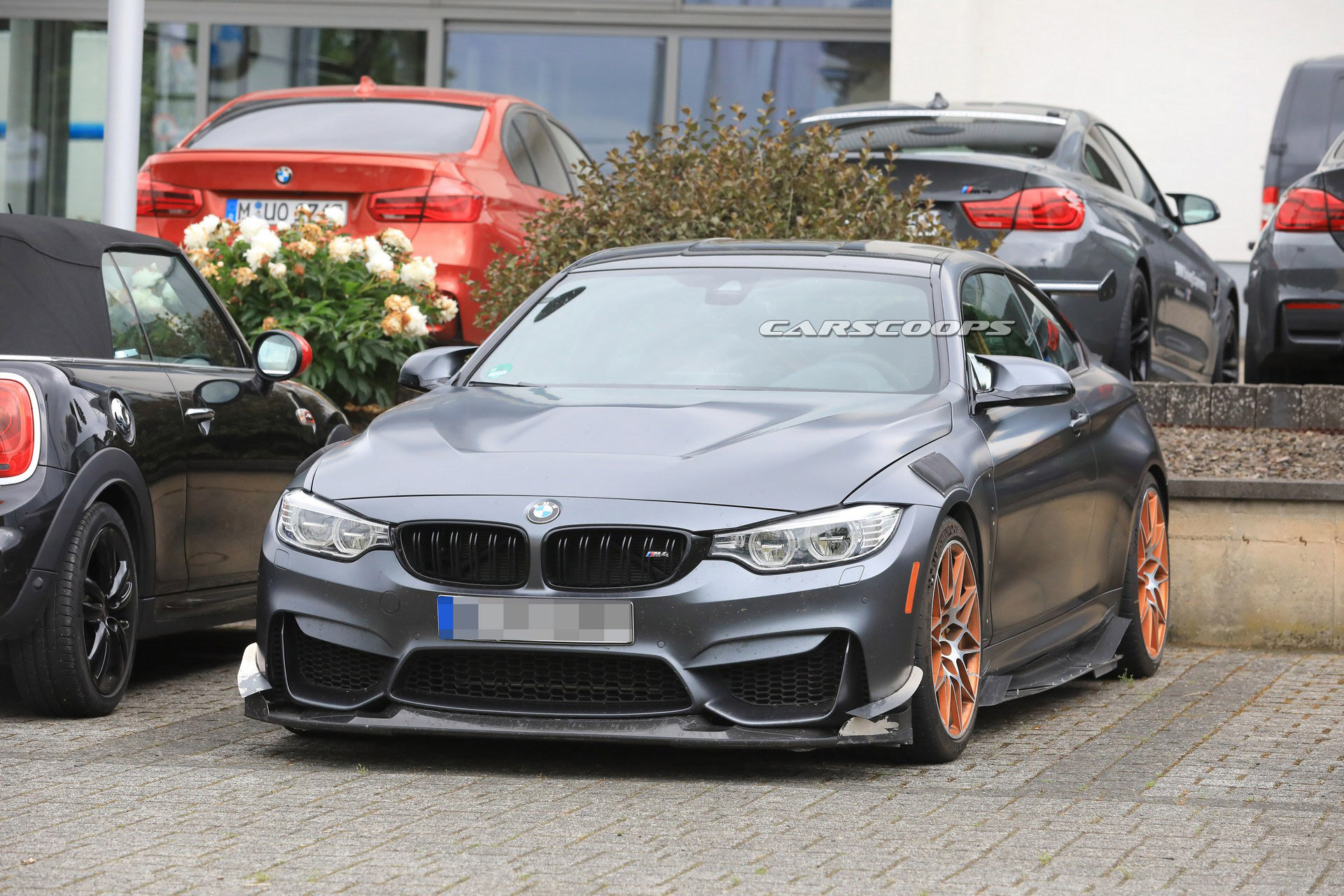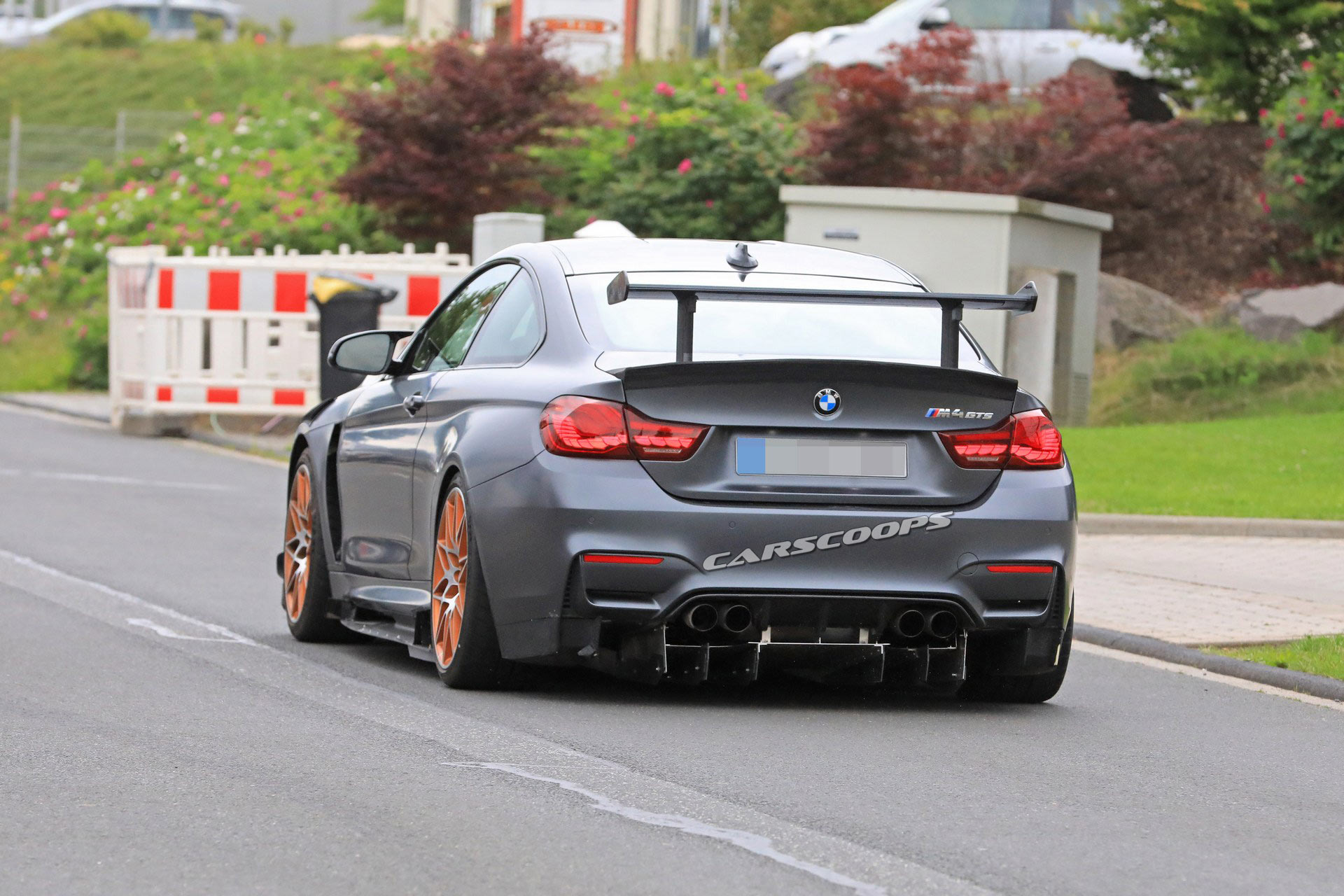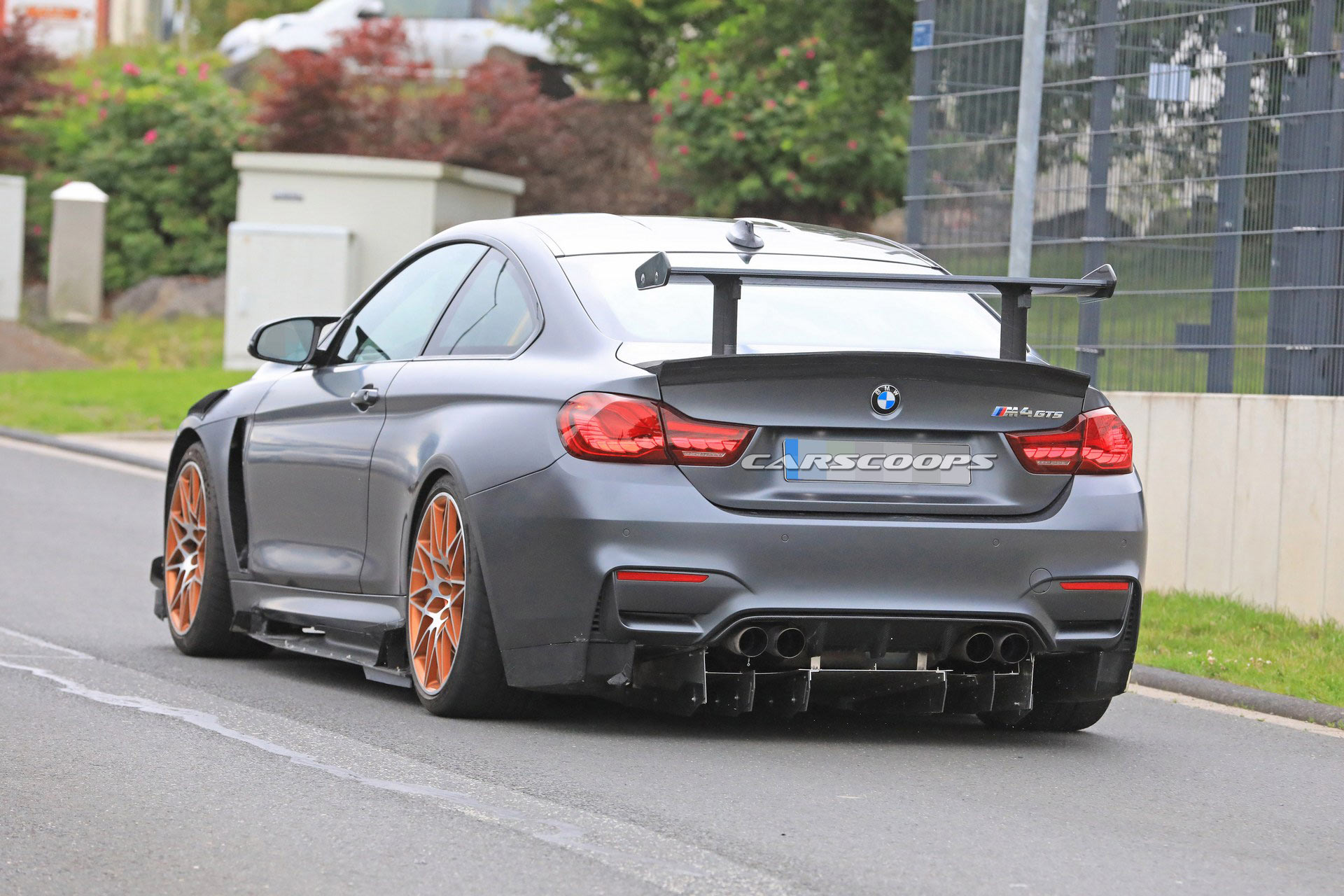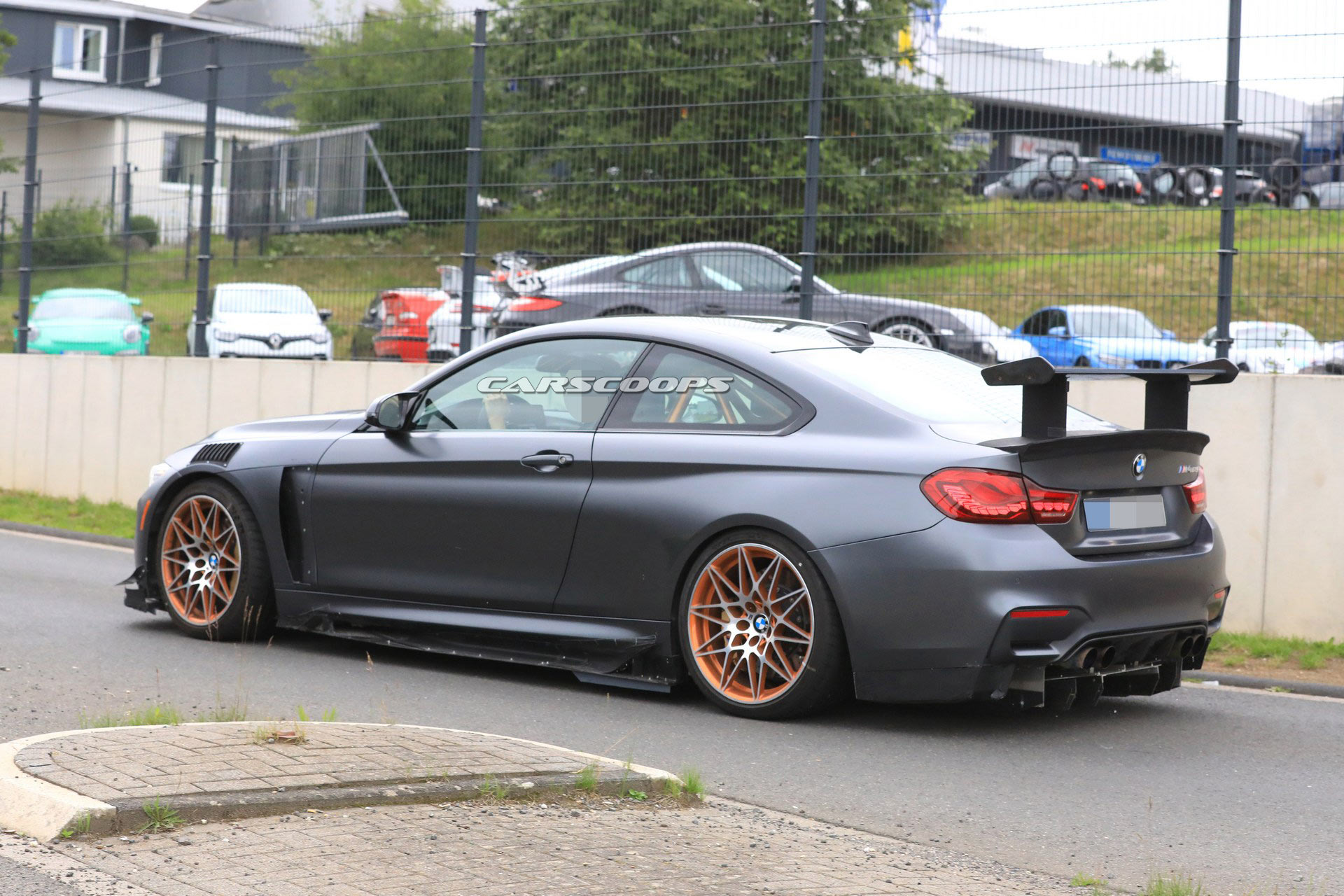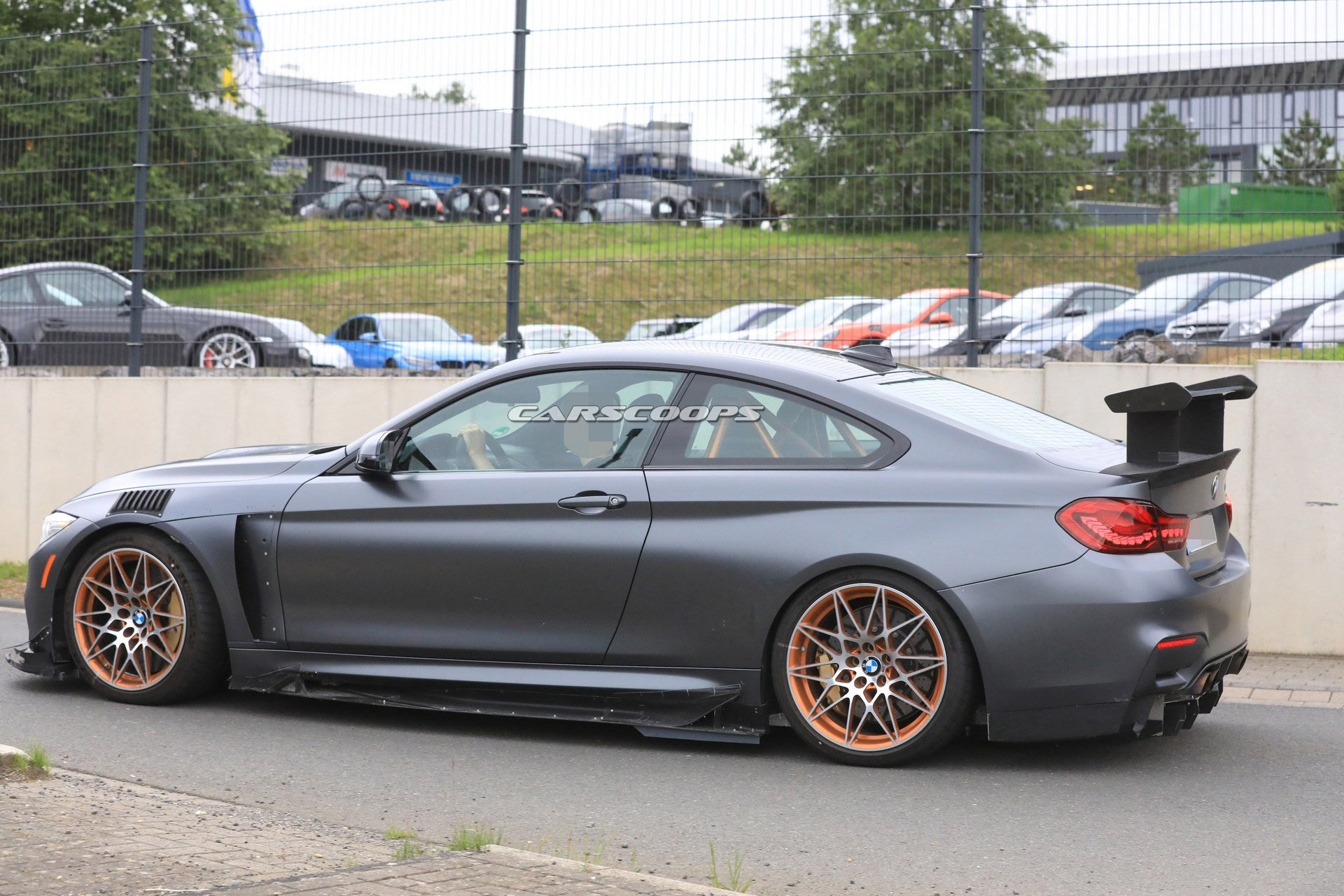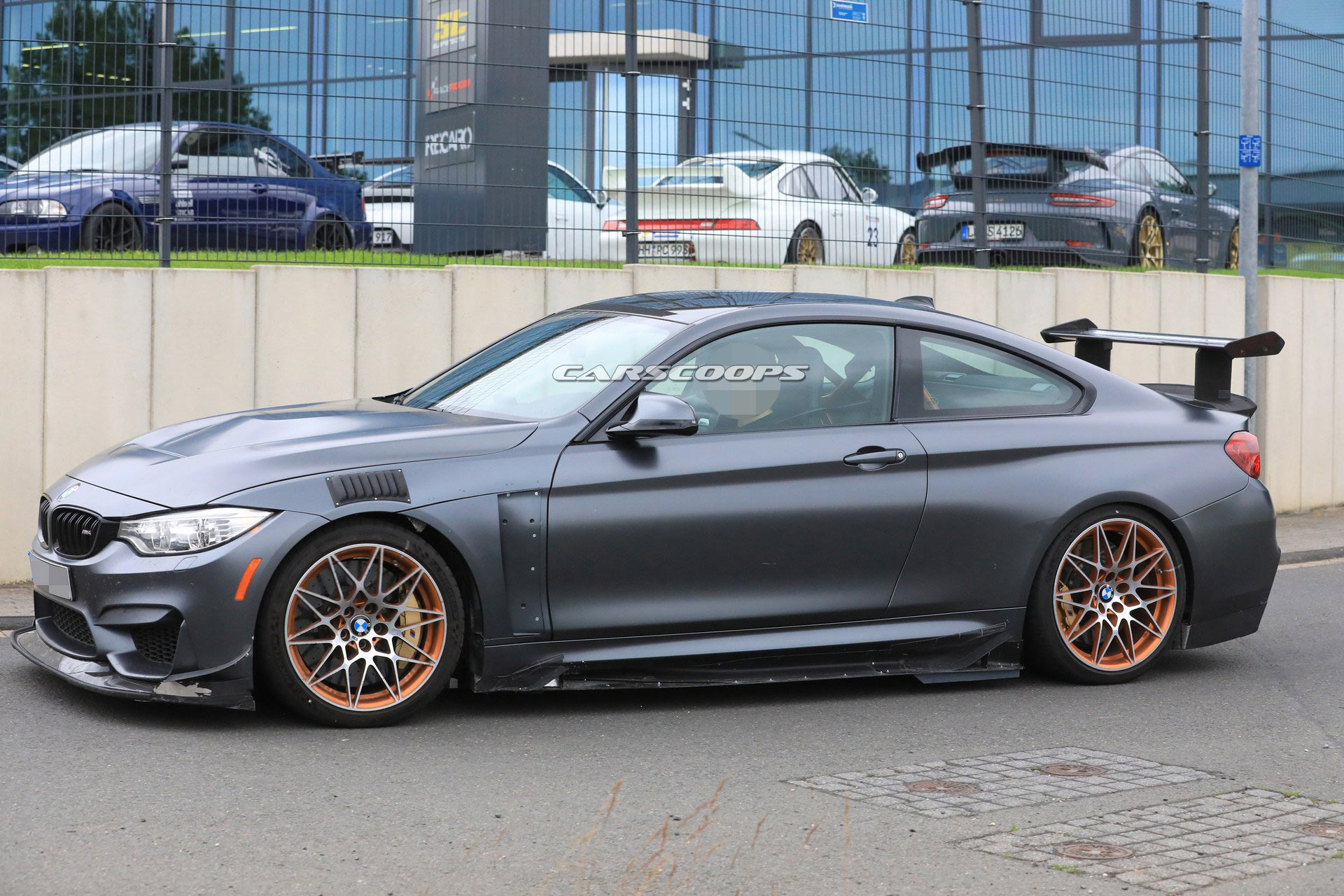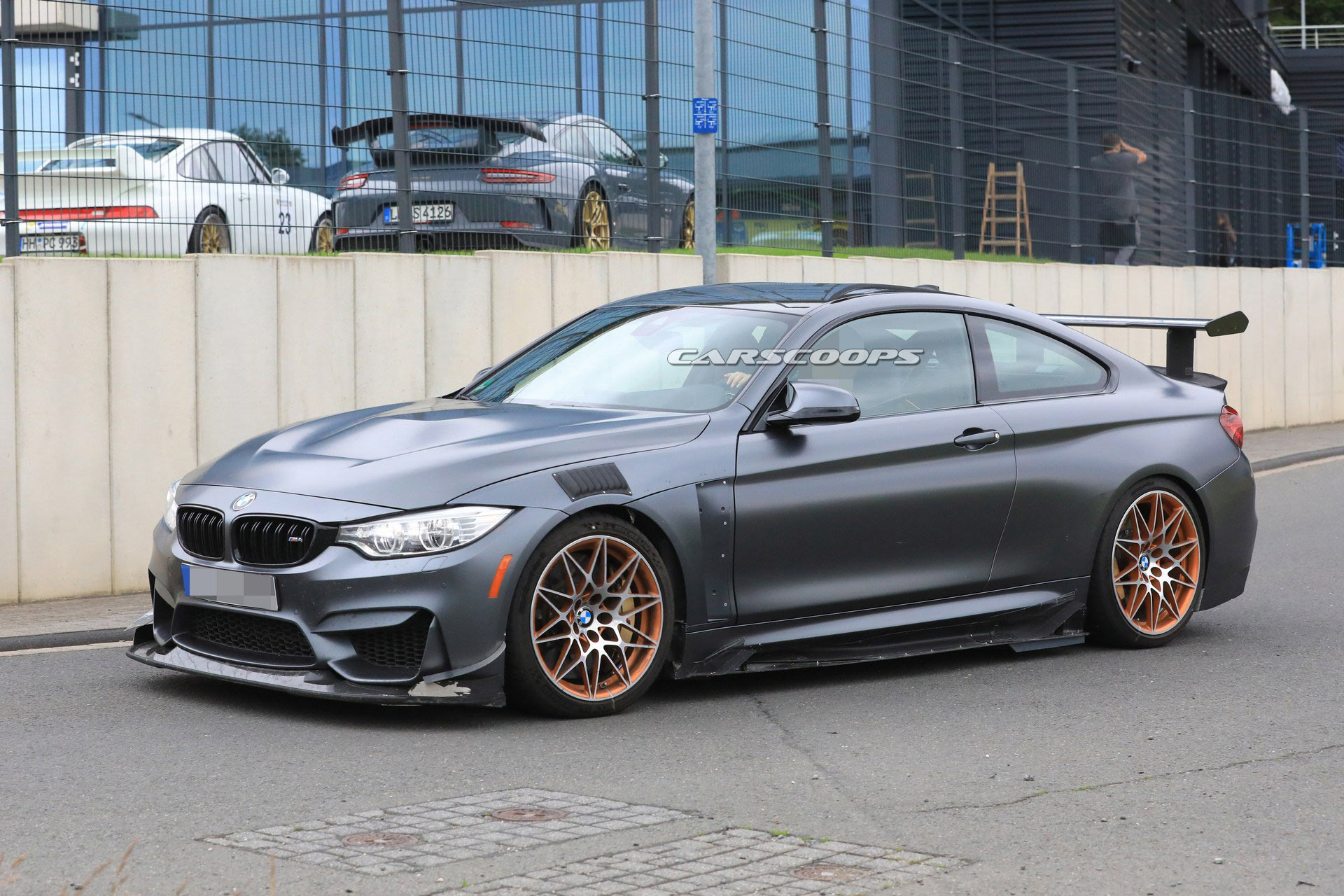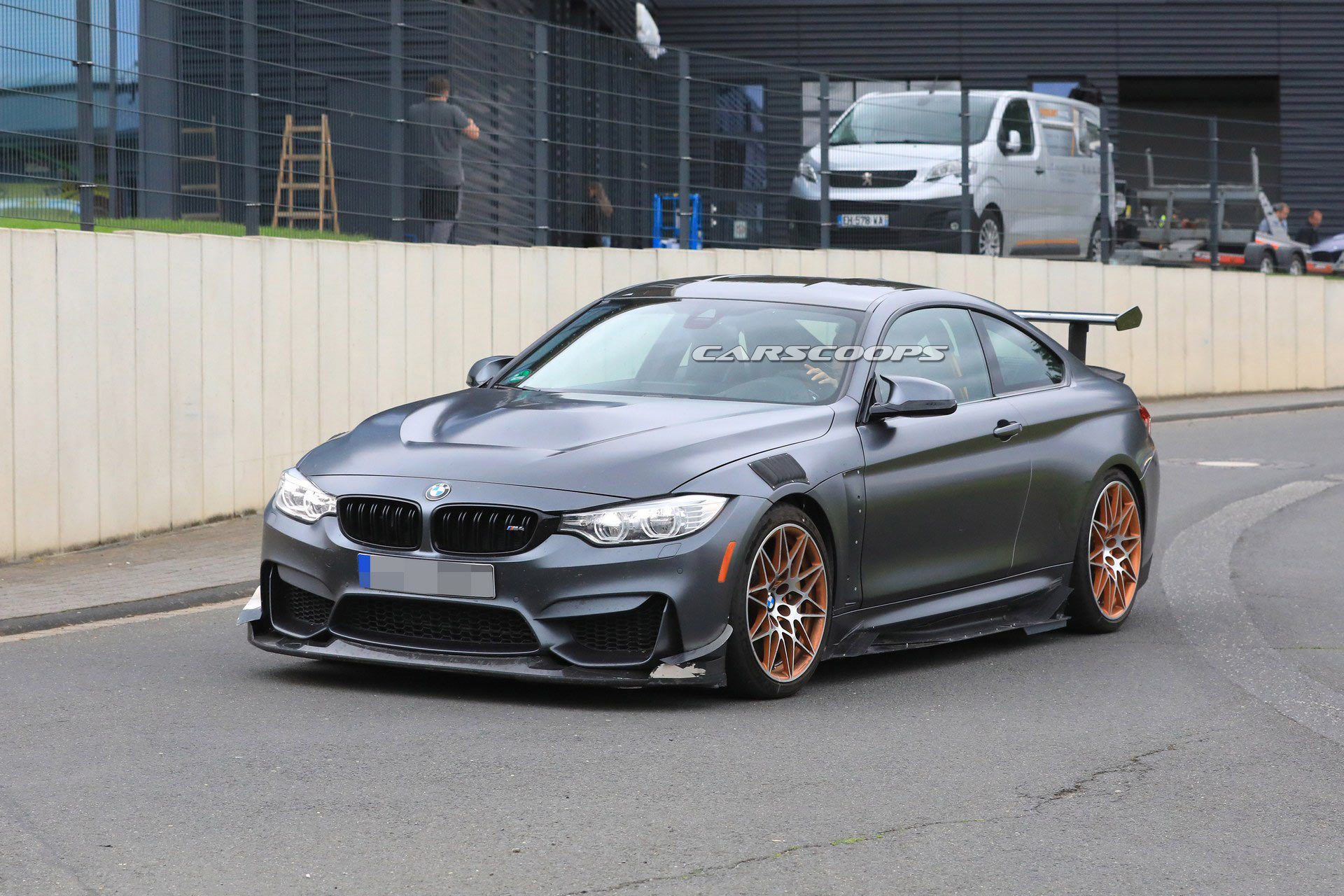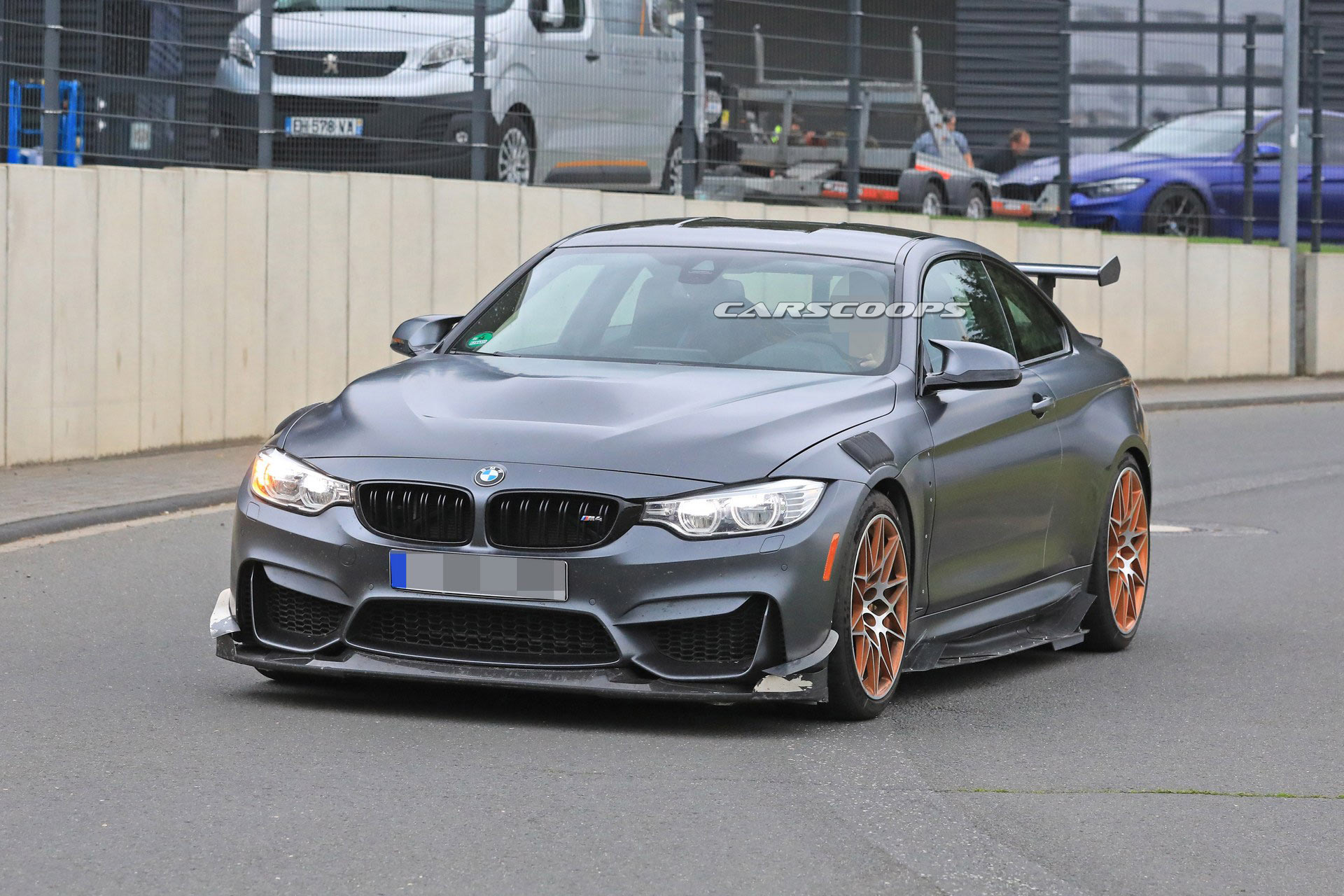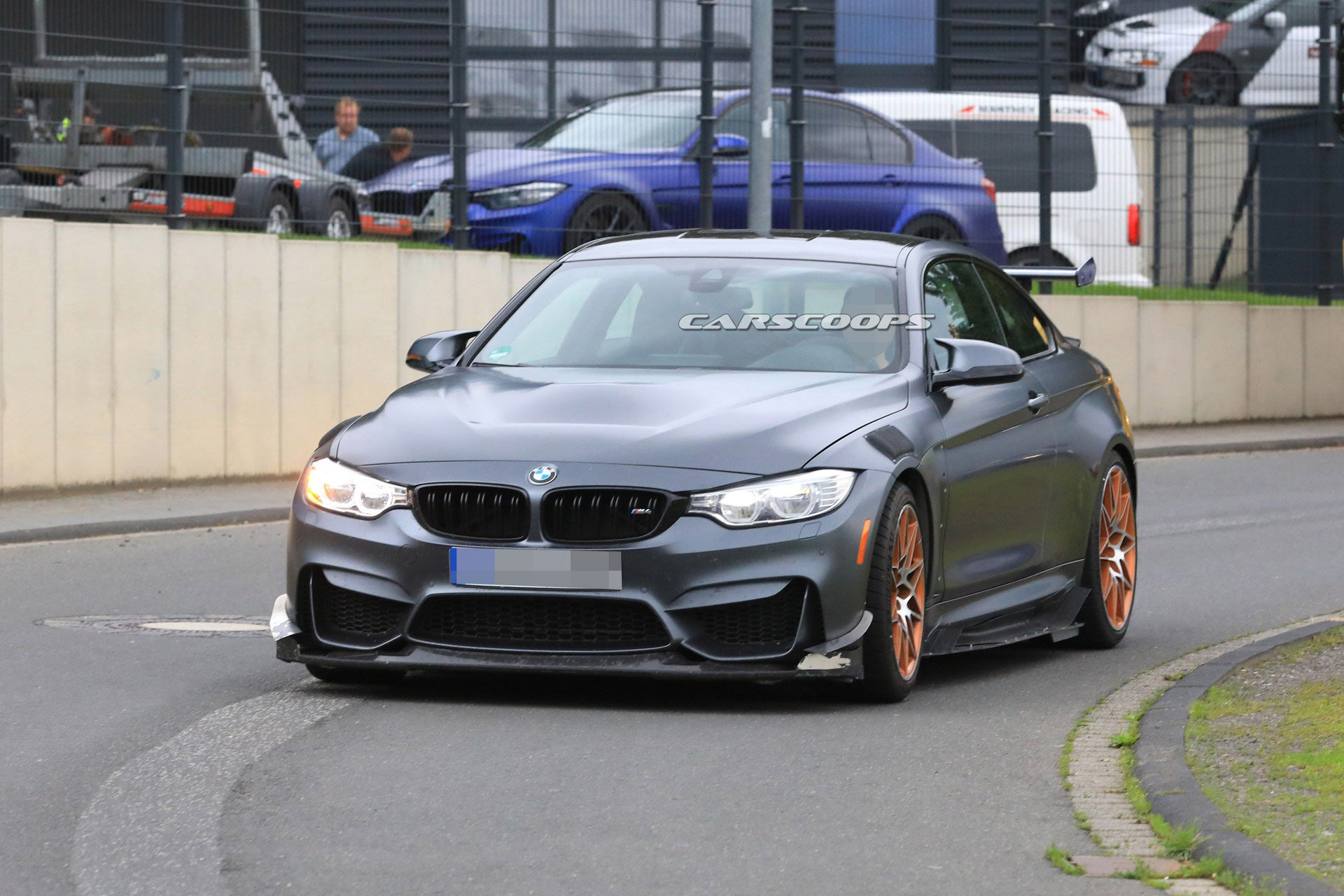BMW unveiled the M4 GTS back in 2015 so it’s surprising that spy photographers recently caught a hardcore prototype undergoing testing in and around the Nurburgring track in Germany.
Looking far more extreme than the limited edition model, this prototype has been equipped with canards and a larger front splitter. The styling changes don’t stop there as the coupe has larger front fender vents as well as new vents above the front wheels.
Moving further back, the M4 GTS prototype has extended side skirts and what appears to be a reduced ride height. The aerodynamic styling cues continue at the rear as the car features a massive wing and a larger rear spoiler. Rounding out the changes are an extended rear bumper and an aggressive diffuser.
It remains unclear why BMW is testing the car but the model could be the basis for a new limited edition that is geared for track days. This remains unconfirmed but the M4 still has some life left in it as the next-generation model isn’t expected to arrive until 2020 or 2021.
Regardless of what BMW has planned, the M4 GTS was a high-performance model which came equipped with an aerodynamic body kit that included an adjustable front splitter, a carbon fiber diffuser and a large rear wing. The car also had a new hood, a titanium exhaust system and eye-catching lightweight alloy wheels.
The focus on performance continued in the cabin as the rear seat was removed to reduce weight. Designers also replaced the door handles with pull loops and installed a “lightweight center console” which was covered in Alcantara upholstery.
The biggest changes occurred under the hood as the 3.0-liter TwinPower Turbo six-cylinder engine was equipped with a water injection system which increased its output to 500 PS (368 kW / 493 hp) and 600 Nm (442 lb-ft) of torque. The engine was connected to a seven-speed dual-clutch transmission which enabled the car to accelerate from 0-100 km/h (0-62 mph) in 3.8 seconds before hitting a top speed of 305 km/h (190 mph). This allowed the M4 GTS to lap the Nürburgring in 7 minutes and 28 seconds – nearly 30 seconds faster than the standard M4.
Production was limited to 700 units and only 300 of them were offered in the United States.




